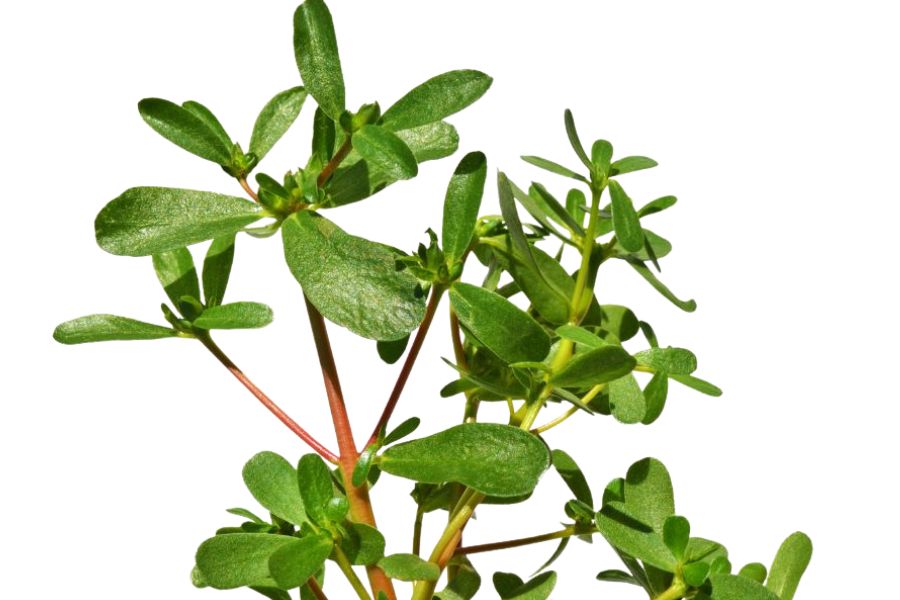Your next meal might be growing in your backyard or along your favorite hiking trail. Oklahoma’s wild spaces are filled with nutritious plants that people have been eating for thousands of years. These free foods are waiting for anyone willing to learn about them.
Spring brings tender dandelion greens and wild onions popping up across the state. Summer offers juicy blackberries and persimmons in wooded areas. Fall and winter have their own special plants, like acorns and wild pecans.
Finding wild food is like learning a new skill that gets easier with practice. You’ll start noticing edible plants everywhere once you know what to look for. Many of these plants taste better than what you find at the grocery store.
Safety comes first when gathering wild foods. Never eat a plant unless you’re completely sure what it is. Taking time to learn proper identification will keep you safe and confident on every foraging trip.
What We Cover In This Article:
- The Edible Plants Found in the State
- Toxic Plants That Look Like Edible Plants
- How to Get the Best Results Foraging
- Where to Find Forageables in the State
- Peak Foraging Seasons
- The extensive local experience and understanding of our team
- Input from multiple local foragers and foraging groups
- The accessibility of the various locations
- Safety and potential hazards when collecting
- Private and public locations
- A desire to include locations for both experienced foragers and those who are just starting out
Using these weights we think we’ve put together the best list out there for just about any forager to be successful!
A Quick Reminder
Before we get into the specifics about where and how to find these plants and mushrooms, we want to be clear that before ingesting any wild plant or mushroom, it should be identified with 100% certainty as edible by someone qualified and experienced in mushroom and plant identification, such as a professional mycologist or an expert forager. Misidentification can lead to serious illness or death.
All plants and mushrooms have the potential to cause severe adverse reactions in certain individuals, even death. If you are consuming wild foragables, it is crucial to cook them thoroughly and properly and only eat a small portion to test for personal tolerance. Some people may have allergies or sensitivities to specific mushrooms and plants, even if they are considered safe for others.
The information provided in this article is for general informational and educational purposes only. Foraging involves inherent risks.
The Edible Plants Found in the State
Wild plants found across the state can add fresh, seasonal ingredients to your meals:
Sand Plum (Prunus angustifolia)

Small but mighty, sand plums grow as shrubby trees reaching 3-12 feet tall with white spring blossoms that give way to round, reddish-orange fruits. Their tart flesh hides beneath a thin skin that turns from green to red as it ripens throughout summer.
These native plums thrive in sandy soils across the southern and central United States. You can identify them by their narrow, lance-shaped leaves with finely toothed edges and clusters of small fruits about 1 inch in diameter.
Only the ripe fruits are edible, while leaves, seeds, and stems contain compounds that can be harmful. The plums make excellent jams, jellies, and wines with their distinctive tangy flavor.
Foragers value sand plums for their abundance when in season and their ability to produce fruit even during drought conditions. Their natural pectin content makes them perfect for preserves without adding commercial thickeners.
Dandelion (Taraxacum officinale)
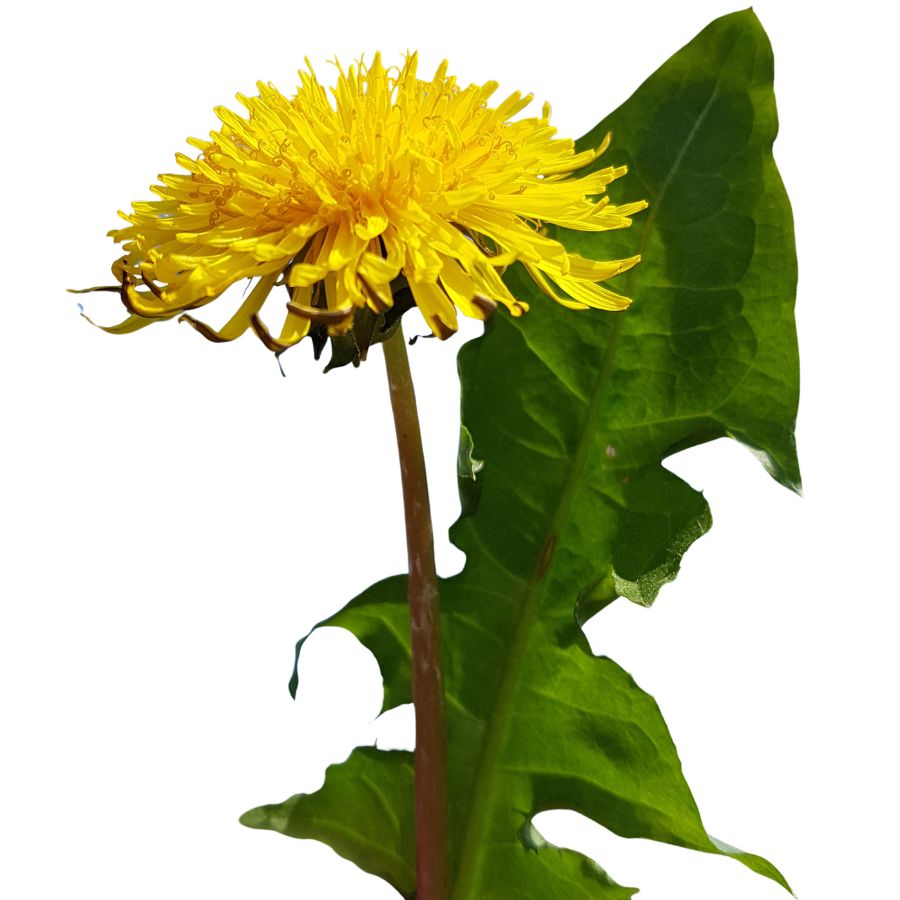
Dandelions pop up in yards and fields with bright yellow flowers that later turn into puffy white seed balls. People have used this common plant for food and medicine for hundreds of years. Every part of the dandelion can be used.
It’s easy to spot dandelions. Look for the toothed leaves growing in a circle at ground level and hollow stems that leak white juice when broken. No dangerous plants look exactly like dandelions, though some similar plants like cat’s ear have hairy leaves while dandelion leaves are smooth.
You can eat the whole plant. Young leaves taste good in salads or cooked like spinach. The flowers can be made into wine or fried into fritters. The roots can be roasted to make a drink like coffee.
Dandelions are very healthy, with more vitamin A than carrots and lots of vitamin C, calcium, and potassium.
Redbud flowers (Cercis canadensis)
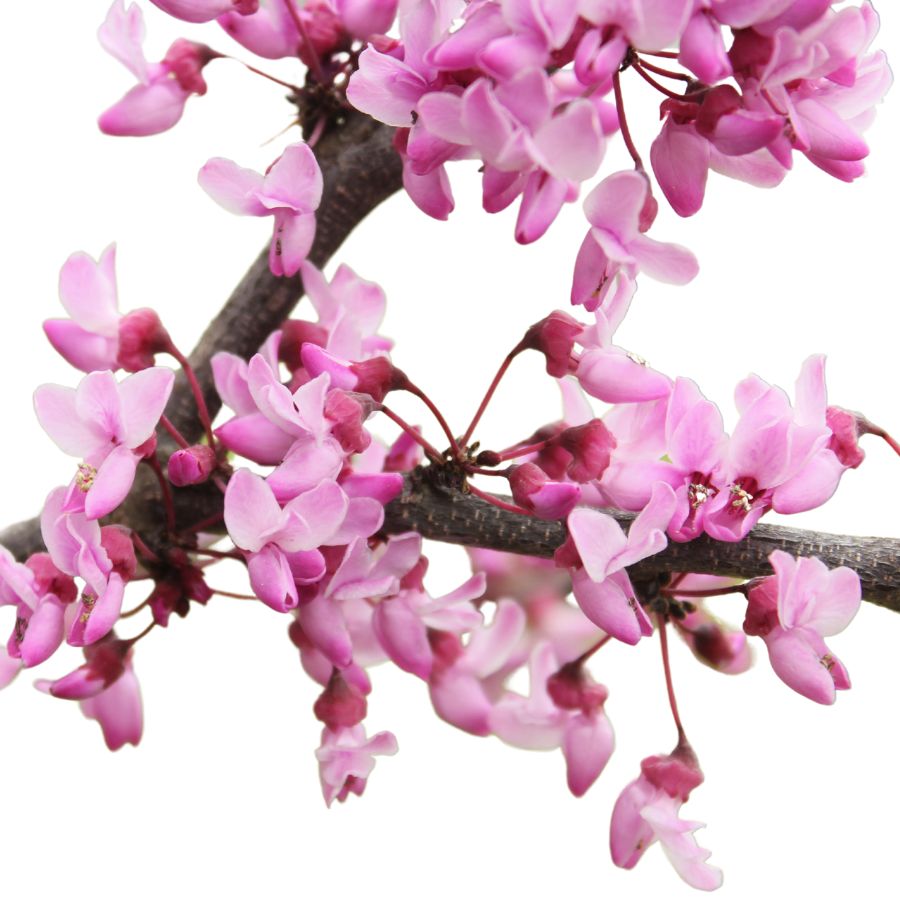
The small, pinkish-purple flowers of the eastern redbud grow directly from the branches and even the trunk. These blooms are edible raw and have a slightly tangy, pea-like flavor that works well in salads or as a garnish.
You can also eat the young seed pods when they’re still flat and tender. They taste somewhat like snow peas and can be lightly steamed, stir-fried, or pickled.
Avoid older seed pods, which become tough and fibrous. Also, be aware that while the flowers and young pods are safe to eat, the mature seeds and bark are not consumed.
Some people sprinkle the blossoms into baked goods for a splash of color and a mild floral note. Others like to candy the flowers, though they lose some of their fresh bite in the process.
Persimmon (Diospyros virginiana)
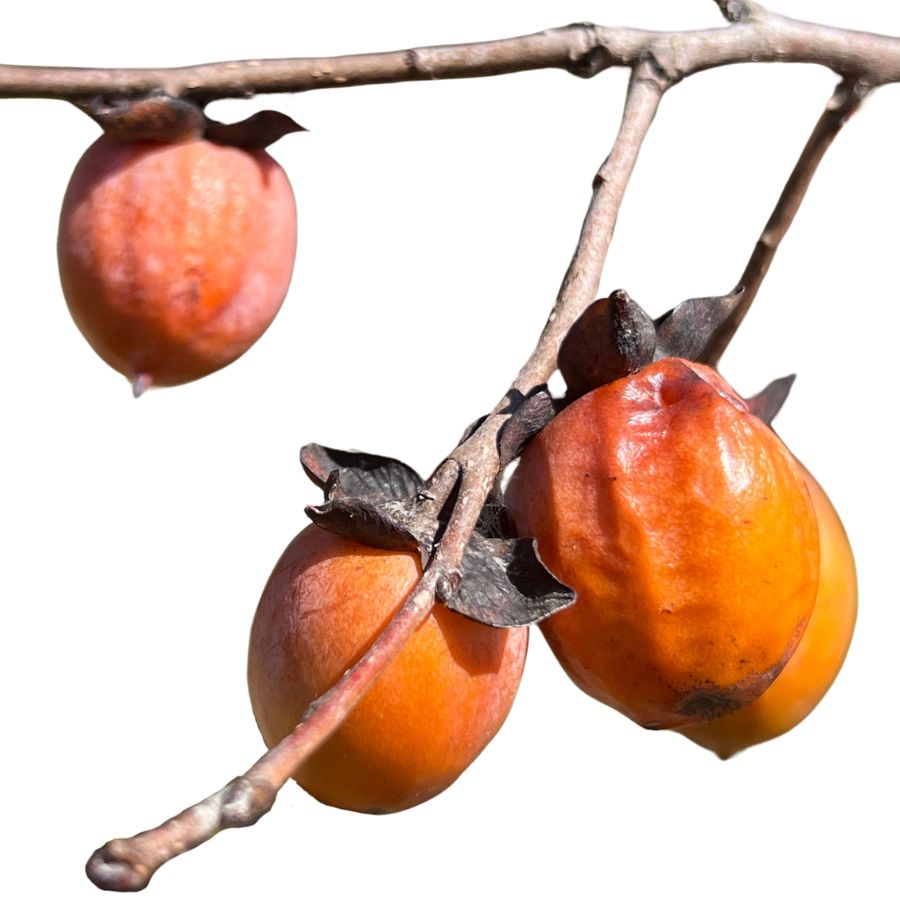
Persimmon, sometimes called American persimmon or common persimmon, grows as a small tree with rough, blocky bark and oval-shaped leaves. The fruit looks like a small, flattened tomato and turns a deep orange or reddish color when ripe.
If you bite into an unripe persimmon, you will quickly notice an extremely astringent, mouth-drying effect. A ripe persimmon, on the other hand, tastes sweet, rich, and custard-like, with a soft and jelly-like texture inside.
You can eat persimmons fresh once they are fully ripe, or you can cook them down into puddings, jams, and baked goods. Some people also mash and freeze the pulp to use later for pies, breads, and sauces.
Wild persimmons can sometimes be confused with black nightshade berries, but nightshade fruits are much smaller, grow in clusters, and stay dark purple or black. Only the ripe fruit of the persimmon tree should be eaten; the seeds and the unripe fruit are not edible.
Pecan (Carya illinoinensis)
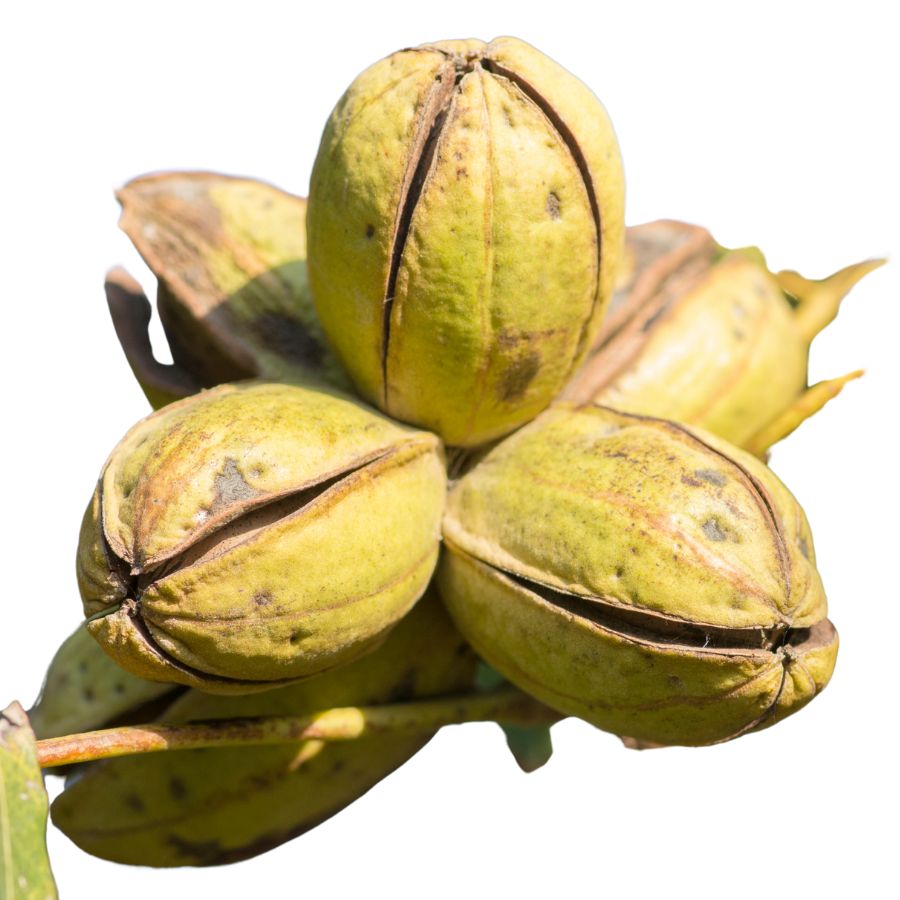
Pecan trees are sometimes called sweet pecans or just pecans, and they are easy to recognize once you know what to look for. They grow tall with long, feather-like leaves and produce a thick-shelled nut that splits open when ripe, revealing the edible part inside.
The nuts are hidden inside a smooth brown shell surrounded by a greenish husk. Some types of hickory nuts can look similar, but pecans are more elongated and have a thinner shell that cracks more easily.
Pecans have a rich, buttery flavor with a slightly sweet aftertaste, and their texture is firm yet tender when fresh. They are commonly roasted, baked into pies, or used raw in salads and desserts for added crunch and flavor.
Be careful not to eat the green outer husk or the hard shell, as only the nutmeat inside is edible. When gathering pecans, make sure they are fully ripened and free from mold or bitterness, which can ruin their flavor.
Horsemint (Monarda punctata)
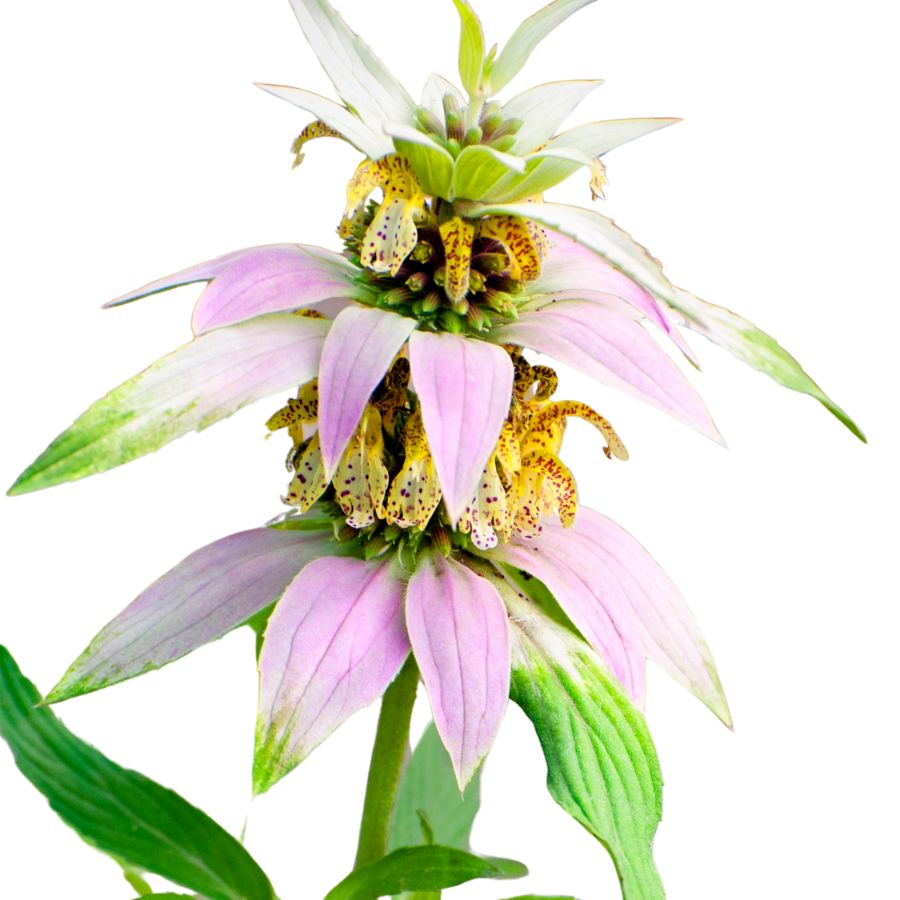
Horsemint stands out in summer fields with its unique stacked flowers in shades of yellow, purple, and white. This native plant attracts bees and butterflies while offering foragers a flavorful herb with a scent that blends mint, oregano, and thyme.
Just rubbing a leaf releases an aroma that hints at its usefulness in cooking.
This member of the mint family has square stems and leaves that grow opposite each other on the stalk. The flowers grow in tiered clusters with colorful bracts that look like extra petals.
All above-ground parts are safe to use, with no toxic lookalikes that share its distinctive appearance and smell. The leaves and flowers make a soothing tea that early settlers used for colds and upset stomachs.
Modern foragers dry the leaves to use as a seasoning for meats and vegetables. The plant also makes a refreshing sun tea on hot summer days.
American beautyberry (Callicarpa americana)
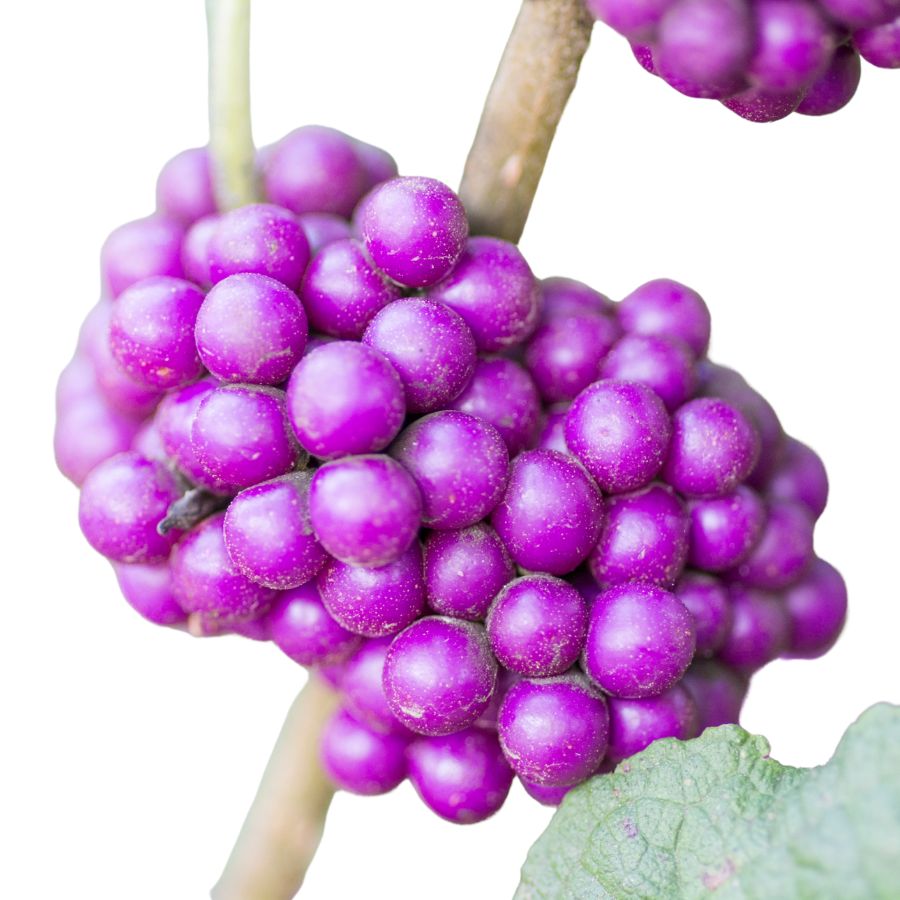
American beautyberry, sometimes called French mulberry or sourbush, is highly easily recognizable thanks to its bright clusters of purple berries wrapped tightly around its stems. The plant itself has arching branches and broad, serrated leaves that give off a slight spicy scent when crushed.
The berries are edible and have a mild, slightly sweet flavor with a soft, juicy texture that some people find a little gritty. Only the ripe purple berries should be eaten, as the leaves and unripe berries are not considered edible.
One of the easiest ways to enjoy beautyberries is by making jelly, where the fruit’s subtle taste really shines through. Some people also simmer the berries into syrups or add them to baked goods, although the flavor can be too delicate to stand out without a little help from sugar or lemon.
Beautyberries are sometimes confused with pokeweed, but pokeweed’s berries are a darker purple and grow on red stems in drooping clusters rather than tight whorls. Always double-check the plant’s structure and berry arrangement so you can be sure you are harvesting true American beautyberry.
Wild Grape (Vitis riparia, Vitis vulpina)
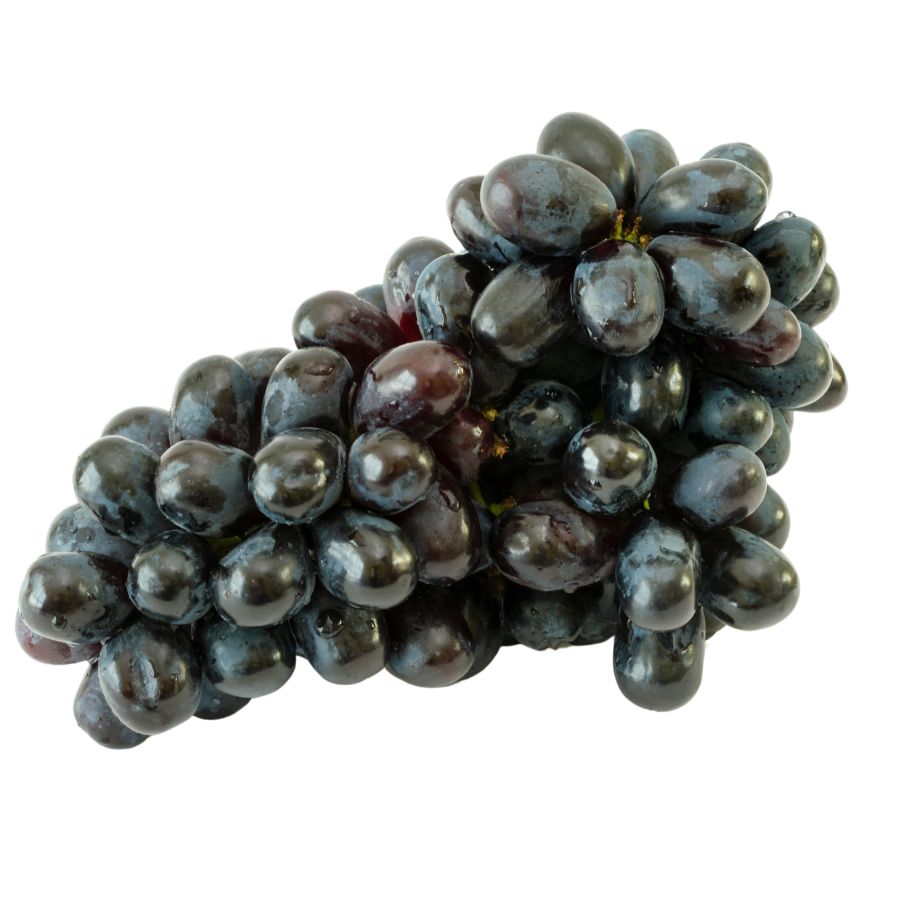
Wild grapes grow on vines that climb trees and fences, reaching for sunlight in woods and fields. Unlike grocery store grapes, these small purple berries pack a punch of flavor that ranges from sweet to sour depending on ripeness. The vines can grow over 20 feet long as they spread through the forest.
You can identify wild grapes by their heart-shaped leaves with toothed edges and the curly tendrils that help them climb. The berries grow in clusters just like regular grapes but are smaller.
Watch out for similar-looking moonseed, which is poisonous. Moonseed has a single crescent-shaped seed, while wild grapes always have multiple round seeds inside. Wild grapes make wonderful jelly, juice, and preserves.
Greenbrier Shoots (Smilax spp.)
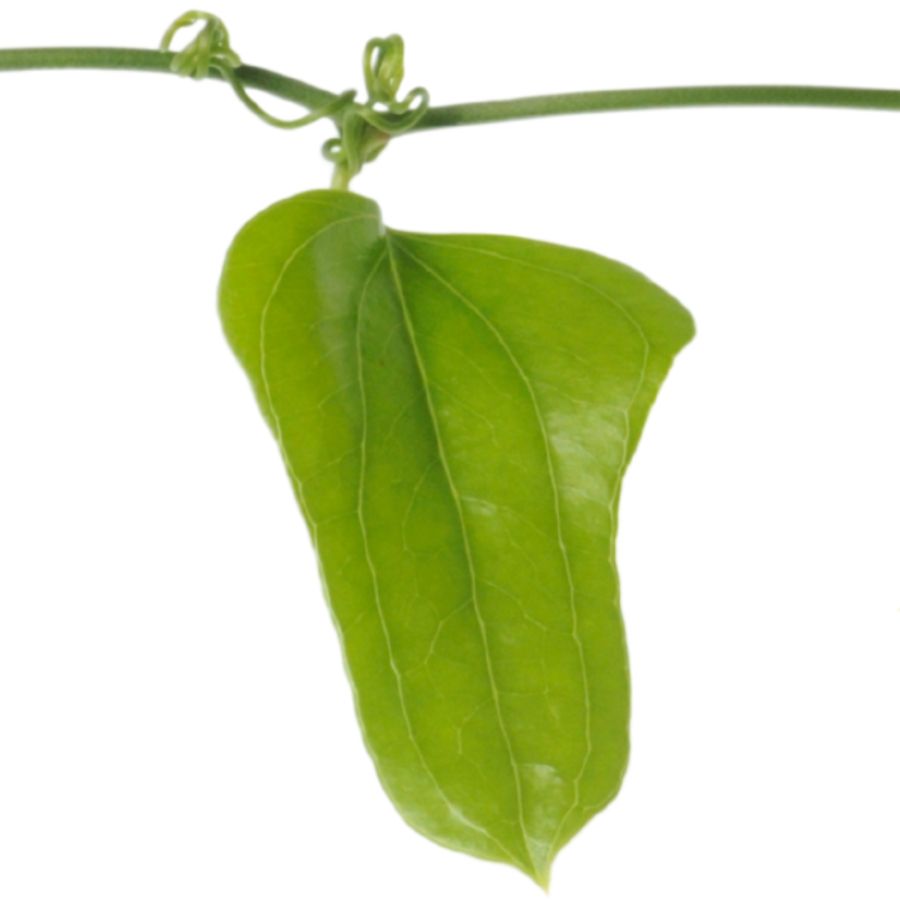
Young greenbrier shoots push through the soil in early spring, offering a wild food that tastes similar to asparagus. These bright green stems are tender and crisp before they mature into the thorny vines that many hikers try to avoid. They have a mild, fresh flavor that works well in many recipes.
Only harvest the first few inches of new growth before it becomes tough. If the shoot snaps cleanly like asparagus, it’s tender enough to eat. If it bends without breaking, it’s too tough.
Greenbrier has shiny, heart-shaped leaves with smooth edges and parallel veins running through them. No poisonous plants look just like it, making it safe for beginner foragers.
You can eat these shoots raw in salads or cook them like vegetables. They taste best when lightly steamed or stir-fried with a little butter or oil.
Prickly Pear Cactus (Opuntia spp.)
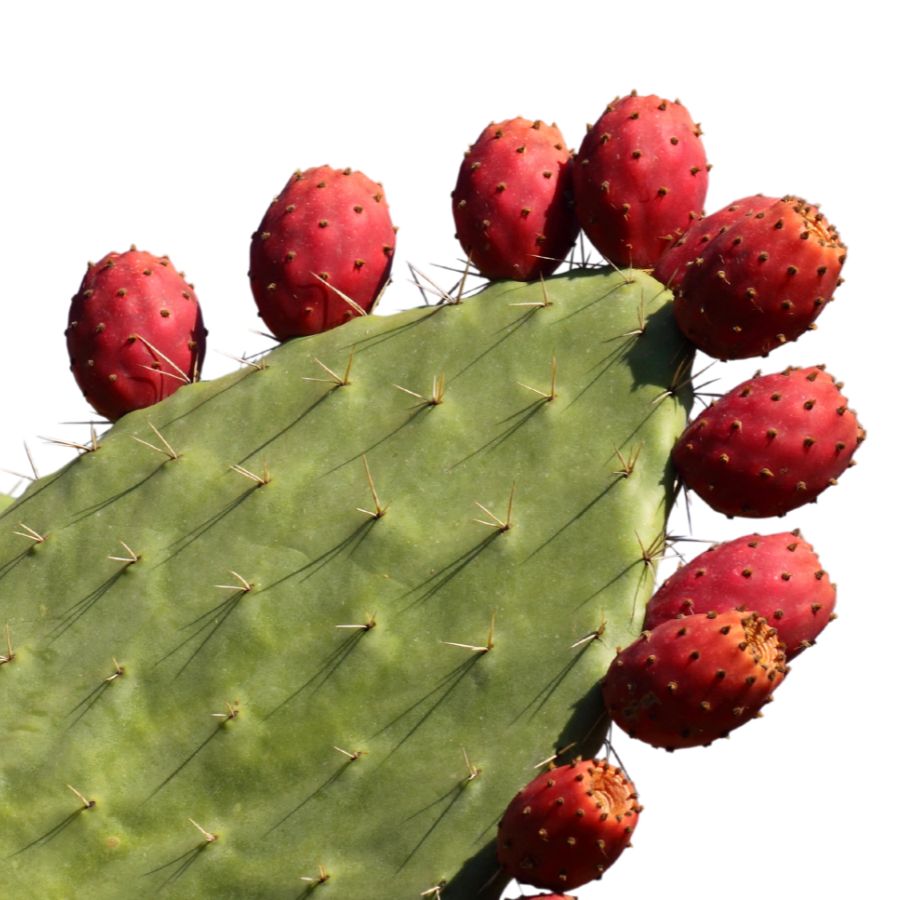
Prickly pear cactus offers food in the desert, with flat green pads and colorful fruits that have fed people for thousands of years. Despite its spiny defense, this plant provides both food and water in dry places where few edible plants grow. The pads taste like tangy green beans, while the fruits are sweet like tropical melons.
Always wear thick gloves when handling prickly pear. Besides the large spines, tiny hair-like prickles called glochids can get stuck in your skin and cause irritation.
Both the pads and fruits can be eaten after removing all spines. The pads are sliced and cooked like vegetables, often in eggs or tacos. The fruits can be peeled and eaten fresh or made into jelly and syrup.
No dangerous lookalikes exist, making it a safe plant to forage once you learn to handle it properly.
Jerusalem artichoke (Helianthus tuberosus)
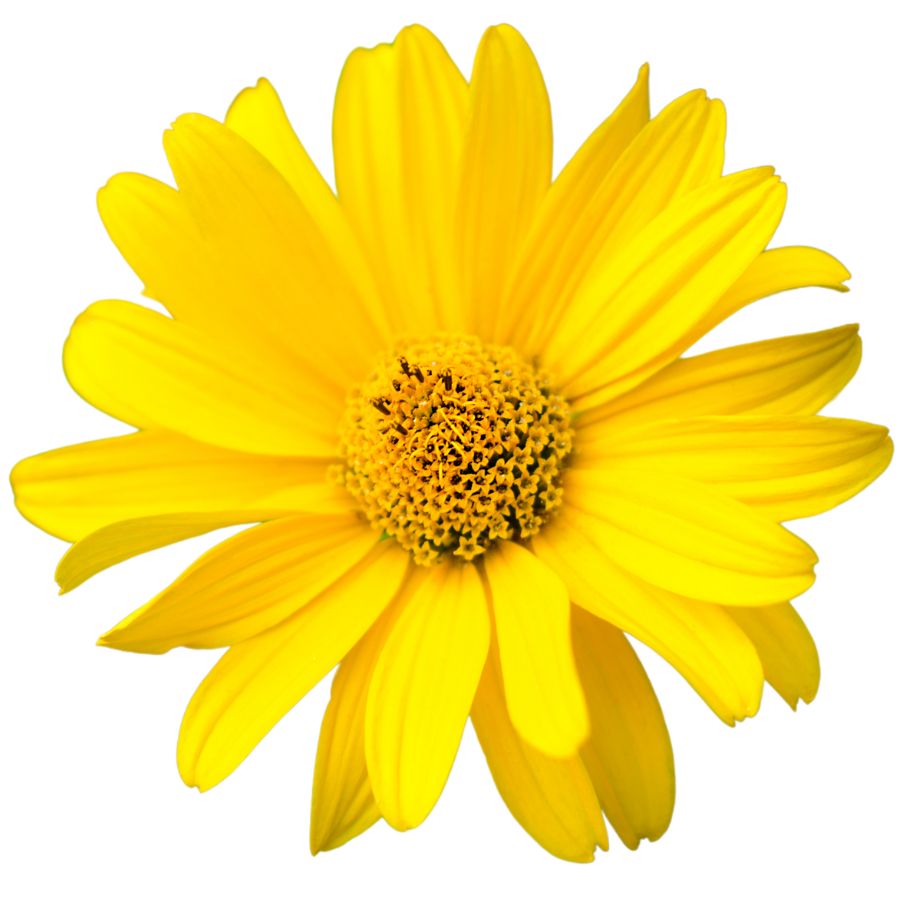
Jerusalem artichoke grows tall with sunflower-like blooms and has knobby underground tubers. The tubers are tan or reddish and look a bit like ginger root, though they belong to the sunflower family.
The part you’re after is the tuber, which has a nutty, slightly sweet flavor and a crisp texture when raw. You can roast, sauté, boil, or mash them like potatoes, and they hold their shape well in soups and stir-fries.
Some people experience gas or bloating after eating sunchokes due to the inulin they contain, so it’s a good idea to try a small amount first. Cooking them thoroughly can help reduce the chances of digestive discomfort.
Sunchokes don’t have many dangerous lookalikes, but it’s important not to confuse the plant with other sunflower relatives that don’t produce tubers. The above-ground part resembles a small sunflower, but it’s the knotted, underground tubers that are worth digging up.
Black walnut (Juglans nigra)
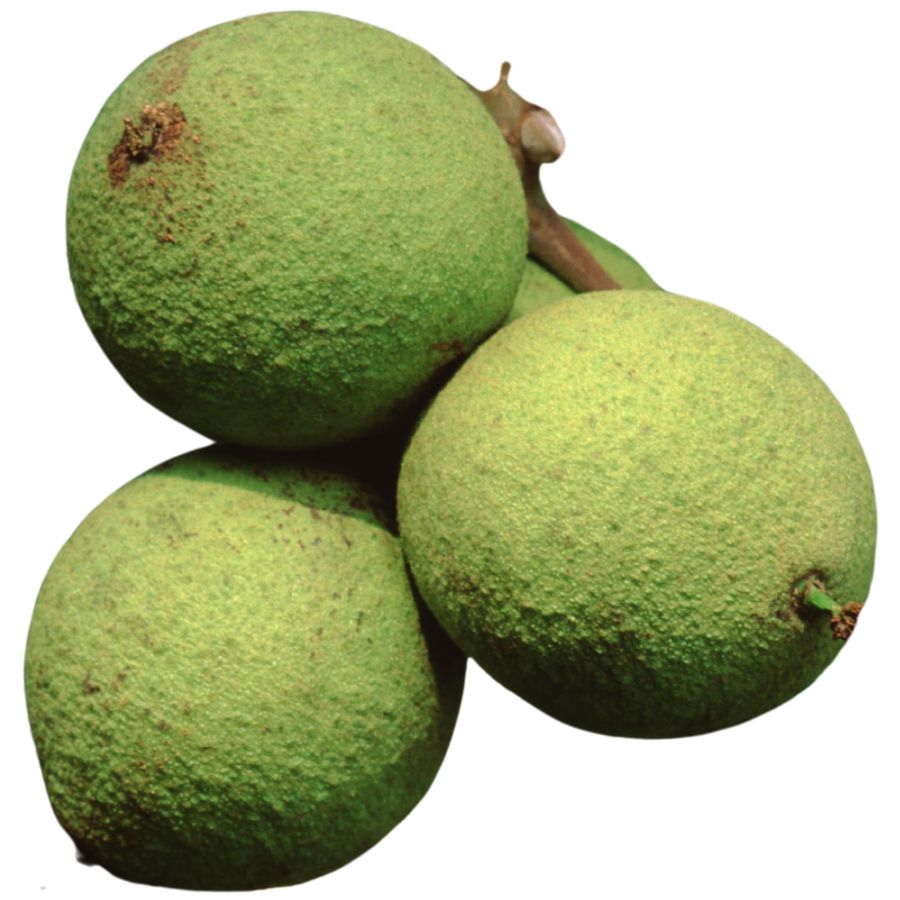
The nuts of the black walnut, sometimes called American walnut or eastern black walnut, have a tough outer husk and a deeply ridged shell inside. When you crack them open, you will find a rich, oily seed with an earthy, slightly bitter flavor that sets them apart from the sweeter English walnut.
It is easy to confuse black walnut with butternut, another tree with compound leaves and rough bark. If you check the nuts closely, black walnut fruits are round with a thick green husk, while butternuts are more oval and sticky.
When you get your hands on the nuts, the common ways to prepare them include baking them into cookies, sprinkling them over salads, or grinding them into a strong-tasting flour. The seeds themselves have a firm, almost chewy texture when raw and become crunchy after roasting.
Only the inner seed is eaten, while the outer husk and shell are discarded because they contain compounds that can irritate your skin. A fun fact about this plant is that even the roots and leaves produce a chemical called juglone, which can make it hard for other plants to grow nearby.
Purslane (Portulaca oleracea)
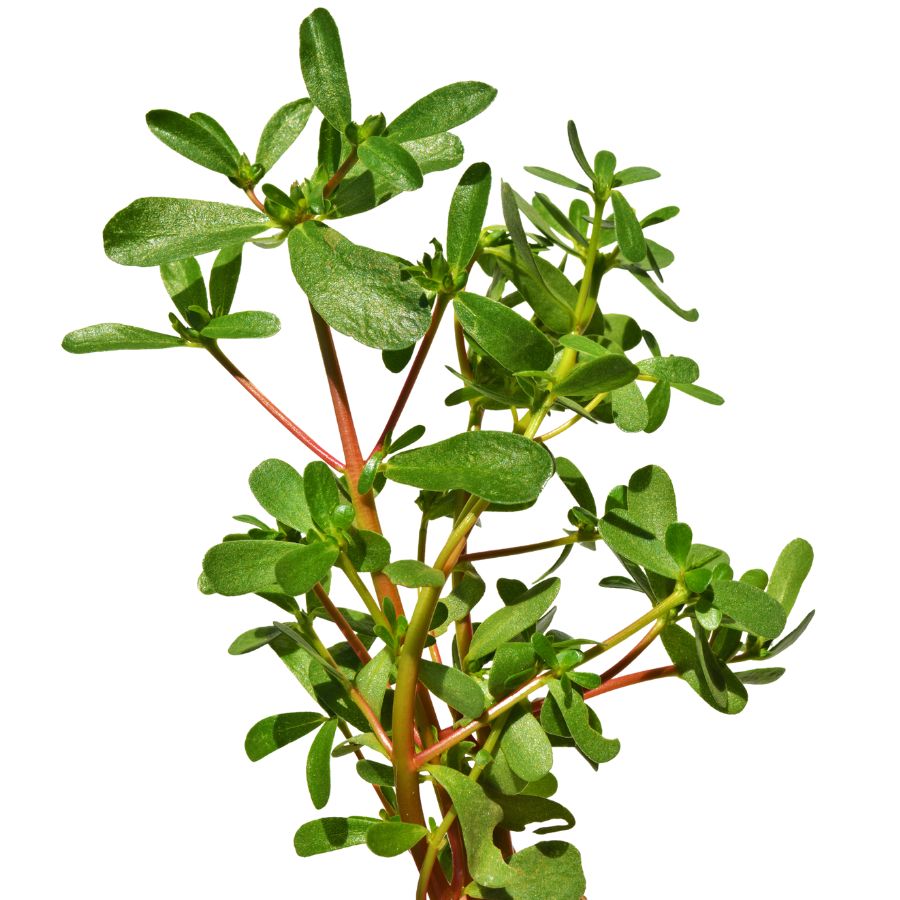
Purslane is a hardy, low-growing plant that’s also sometimes known as little hogweed or verdolaga. It has smooth, reddish stems and thick, paddle-shaped leaves that feel a bit waxy when you touch them.
The stems, leaves, and tiny yellow flowers are all edible, while the roots are not typically eaten. Purslane has a crisp texture with a slightly tart, lemony flavor that works well raw or cooked.
Some plants that look similar include spurge, which has a milky sap and is not edible, so it is important to check for purslane’s smooth, succulent stems and lack of sap. Always double-check by gently snapping a stem to make sure no white liquid appears.
You can toss fresh purslane into salads, sauté it lightly like spinach, or pickle it for later use. Its mild tartness and slight crunch make it a refreshing addition to sandwiches, soups, and even stir-fries.
White clover (Trifolium repens)
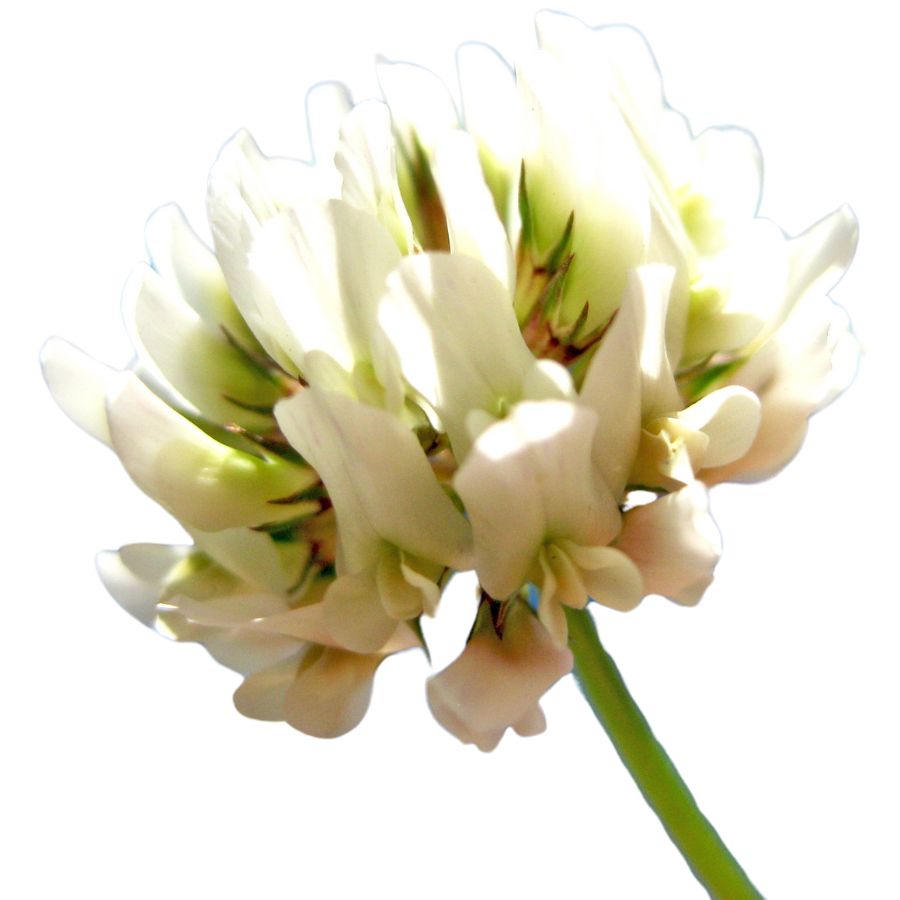
White clover shows up with three-part leaves and round flower heads that cluster into soft white pom-poms. As the blossoms age, they can shift toward a tan or pinkish tint.
The tender leaves are usually cooked into soups, while the dried flowers make a mild, earthy tea. You can also dry the flower heads to grind into meal for blending with flour.
All parts above ground are usable, but the leaves and blossoms are the most common foragers go for. Make sure you don’t confuse it with less common, ornamental clover relatives that aren’t edible.
There’s a compound in moldy clover called coumarin that can cause issues if ingested in large quantities. Stick to fresh or properly dried plant material.
Watercress (Nasturtium officinale)
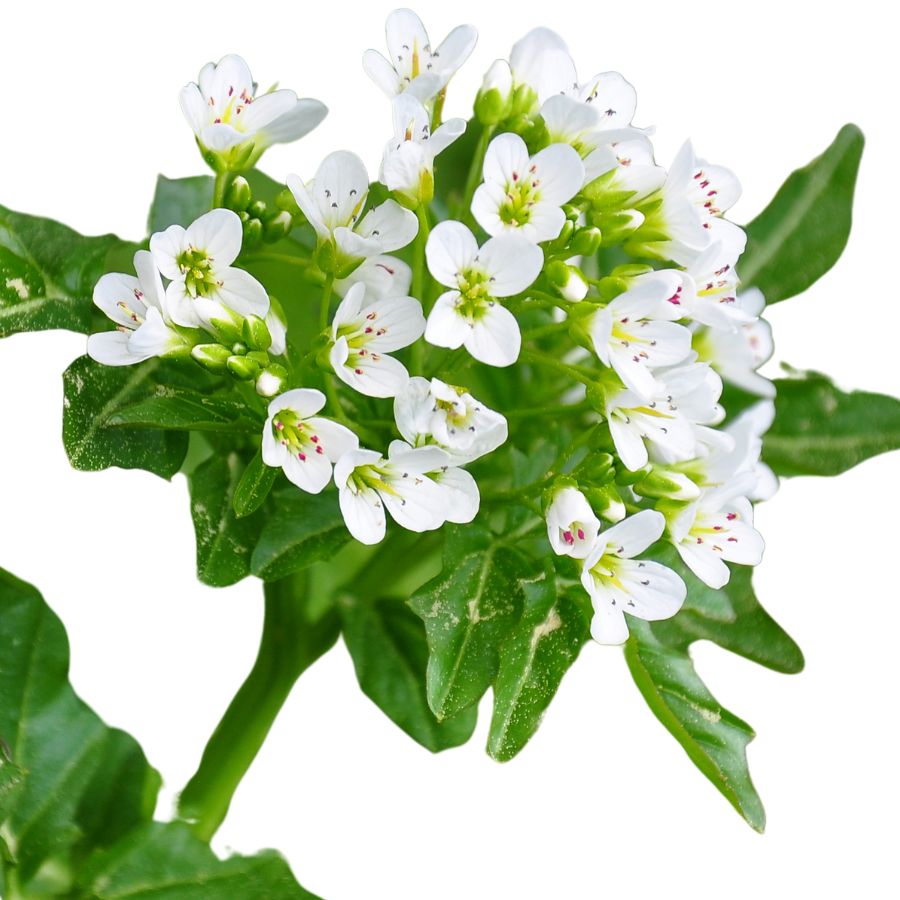
Watercress, also known as yellowcress or garden cress, is an aquatic plant with small, rounded green leaves and hollow stems that often float along the water’s surface. It usually grows in dense mats, and the bright green color is one of the easiest ways to spot it in clear, shallow streams and ponds.
Besides being a popular edible green, watercress has been traditionally used in herbal remedies, especially for boosting digestion and respiratory health.
The leaves and stems are edible, offering a crisp texture and a peppery, slightly spicy taste that can remind you of arugula. People often enjoy it raw in salads, blended into soups, or lightly wilted into stir-fries for a fresh bite.
Stick to eating the leaves and stems, and avoid any parts that look yellowed or slimy, since healthy watercress should always look vibrant and clean.
Watercress has a few lookalikes like lesser celandine or young wild mustard, but true watercress has a distinct sharp flavor and tends to grow only in moving, clean water. Always double-check your identification, because gathering from stagnant or contaminated water sources can expose you to harmful bacteria or parasites.
Sumac (Rhus glabra, Rhus copallina)
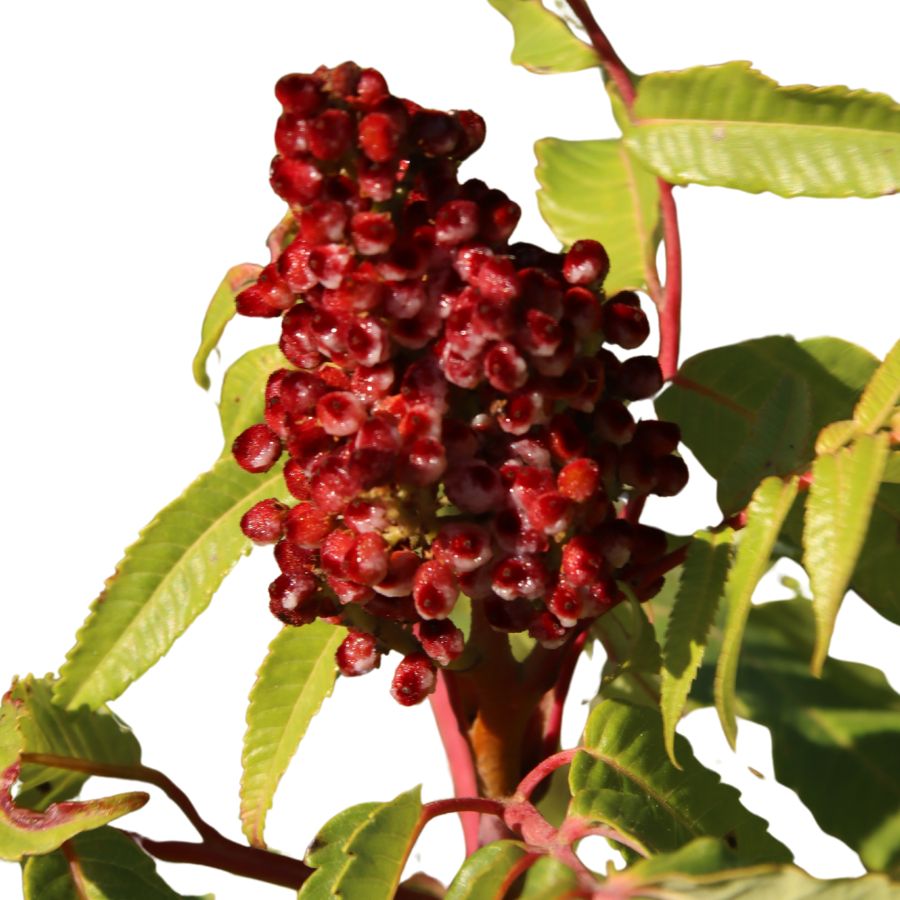
Sumac grows as a shrub or small tree with feather-like leaves and clusters of deep red berries. The berries are tightly packed into cone-shaped bunches that have a soft, fuzzy texture when you touch them.
The bright red berries are the edible part, while the stems, leaves, and bark should not be eaten. If you taste the berries raw, they have a tart, lemony flavor that leaves a dry feeling in your mouth.
A common lookalike is poison sumac, but it has white berries and grows in wet, swampy areas, which helps set it apart. Always make sure the sumac you gather has fuzzy red berry clusters and grows in drier places.
People often use the berries by soaking them in water to make a tangy drink similar to lemonade. You can also dry and grind the berries into a spice that adds a sour kick to different foods.
Sow thistle (Sonchus oleraceus)
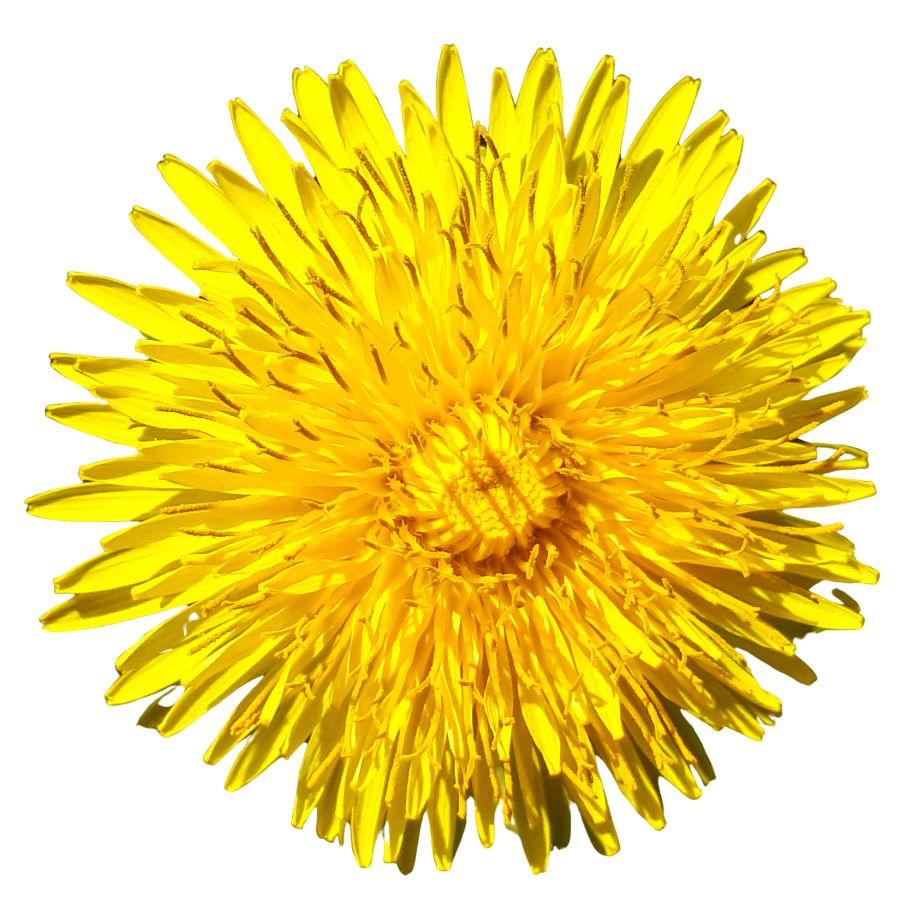
Sow thistle, often called hare’s thistle or milk thistle, is a spiny-leaved plant with bright yellow flowers that resemble small dandelions. The young leaves are tender and green, with a mild flavor that makes them easy to mix into salads or sautés.
The leaves and tender stems are the parts you can eat, and they are often lightly steamed or added raw to dishes for a slight bitter note. Older leaves can get fibrous and less pleasant, so it helps to pick younger plants if you want a smoother texture.
When foraging, make sure you are not confusing sow thistle with prickly lettuce or spiny sow thistle, both of which have sharper spines and a much tougher texture. One good way to tell is by snapping a stem and checking for the milky sap and softer feel that true sow thistle has.
Sow thistle has also been used traditionally for its potential medicinal properties, especially for digestion. Always harvest away from roadsides or treated areas, since the leaves can easily absorb chemicals from the surrounding environment.
Ground Cherry (Physalis spp.)
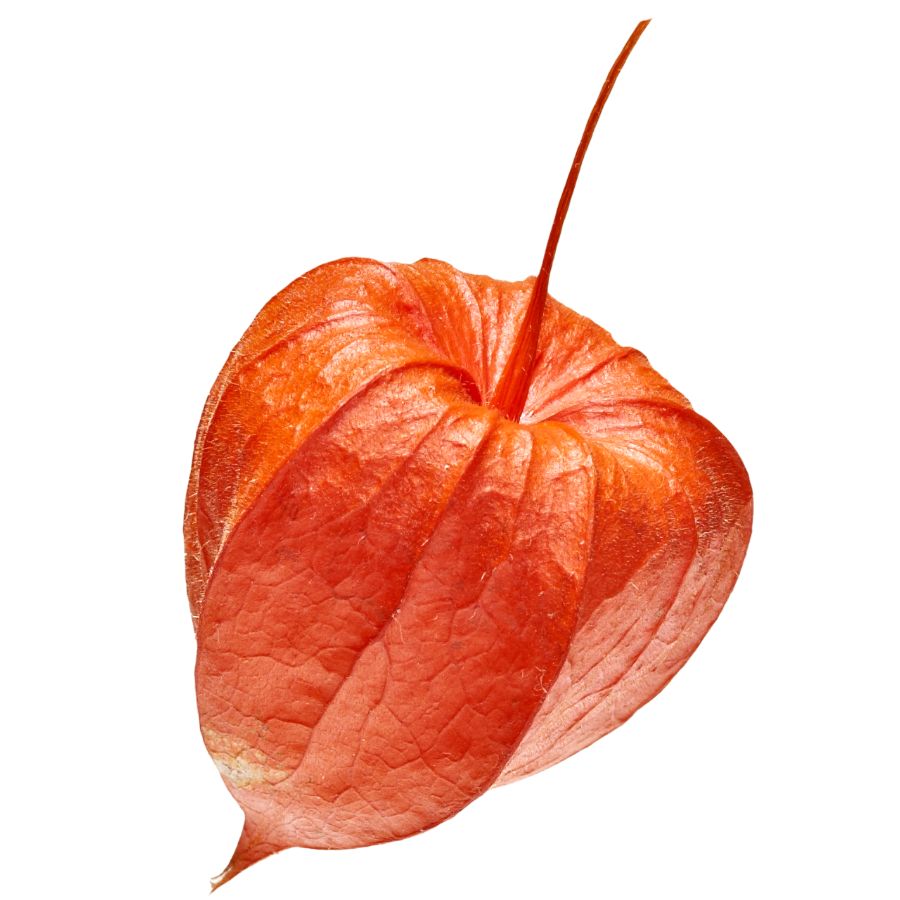
Ground cherries grow as small bushy plants with paper-like husks that look like tiny lanterns. Inside these husks hide sweet-tart fruits. The husks start green and turn brown as the golden-orange berries ripen inside. They taste like a mix of pineapple and tomato with a hint of vanilla.
You can tell they’re ripe when they fall to the ground. That’s how they got their name! Look for the paper husks and heart-shaped leaves to find them. Be careful not to mix them up with Chinese lantern plants, which have bright orange husks and berries you can’t eat.
Only eat the yellow-orange berries inside the husks. The leaves, stems, and green berries are not safe to eat. You can enjoy ground cherries fresh, in salads, or made into jams and pies.
Wild Sunflower (Helianthus annuus)
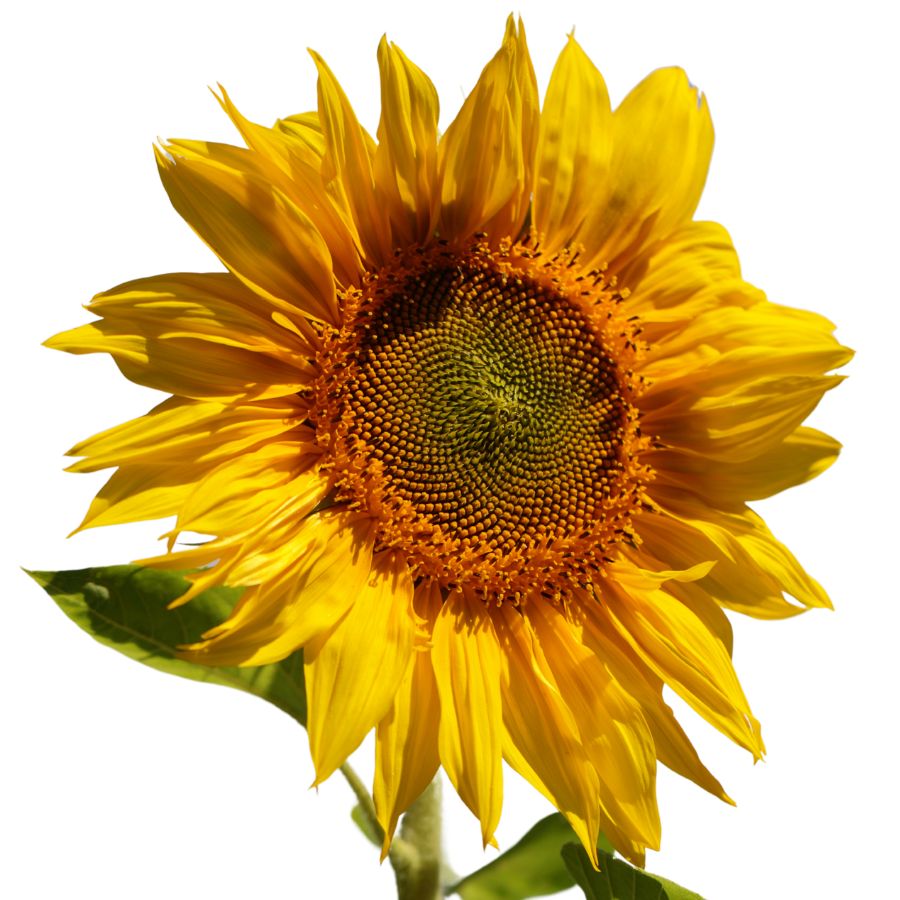
Wild sunflowers stand tall with bright yellow petals around a dark center. These plants can grow 3-10 feet high with rough, hairy stems and big heart-shaped leaves that feel like sandpaper when you touch them.
The seeds are good for you. They have protein, healthy fats, and vitamin E. You can collect them when the flower heads dry out and start to face down. You’ll know it’s a sunflower by the rough stems and leaves that grow on opposite sides.
There aren’t any dangerous plants that look like sunflowers, so they’re safe for new foragers. Besides the seeds, you can eat young flower buds cooked like artichokes. The yellow petals can be added to salads for color. Native Americans used to make tea from the roots to help with chest pain.
Mulberry (Morus rubra)
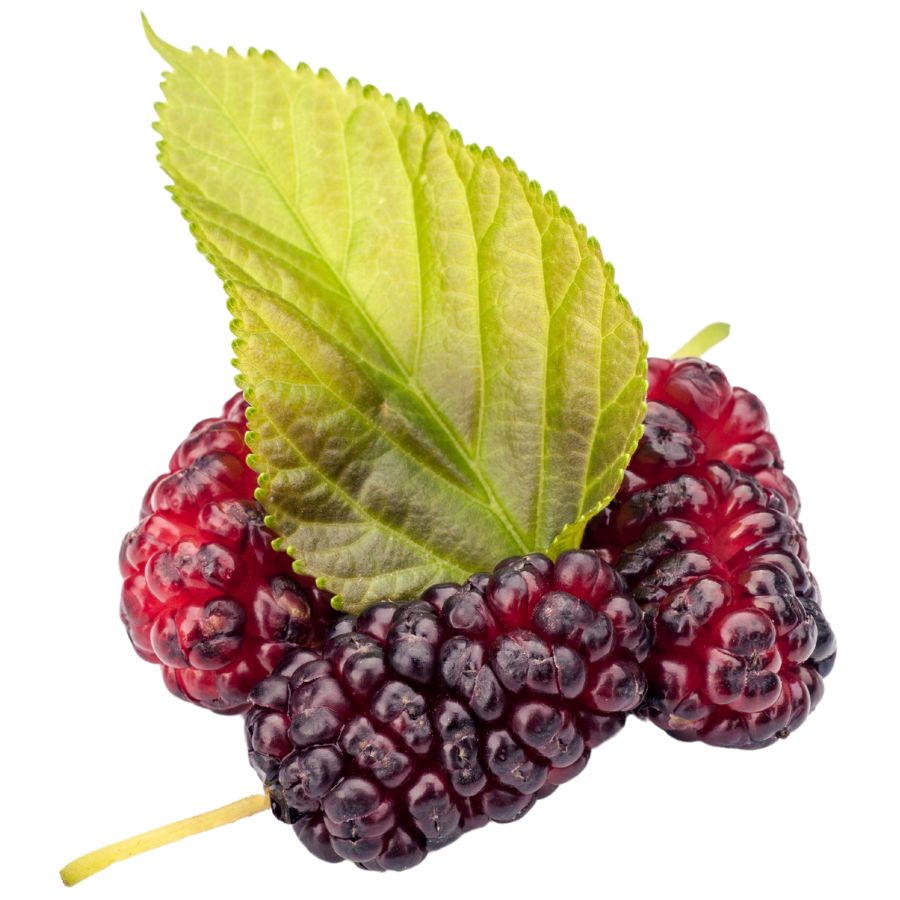
Mulberries hang from trees like tiny blackberries. They change color from white to red to dark purple as they ripen. These sweet, juicy fruits grow right on the branches without stems and stain your fingers purple when you pick them.
They look like blackberries but don’t have the hard core in the middle. Mulberry trees have leaves with different shapes, often with multiple points and jagged edges. These leaves are what silkworms eat to make silk.
There are no poisonous berries that look like mulberries, making them safe to pick. Only eat the ripe ones, as green mulberries can upset your stomach. You can eat them fresh or make them into jams, pies, and drinks. They have lots of good nutrients like vitamin C and iron.
Toxic Plants That Look Like Edible Plants
There are plenty of wild edibles to choose from, but some toxic native plants closely resemble them. Mistaking the wrong one can lead to severe illness or even death, so it’s important to know exactly what you’re picking.
Poison Hemlock (Conium maculatum)
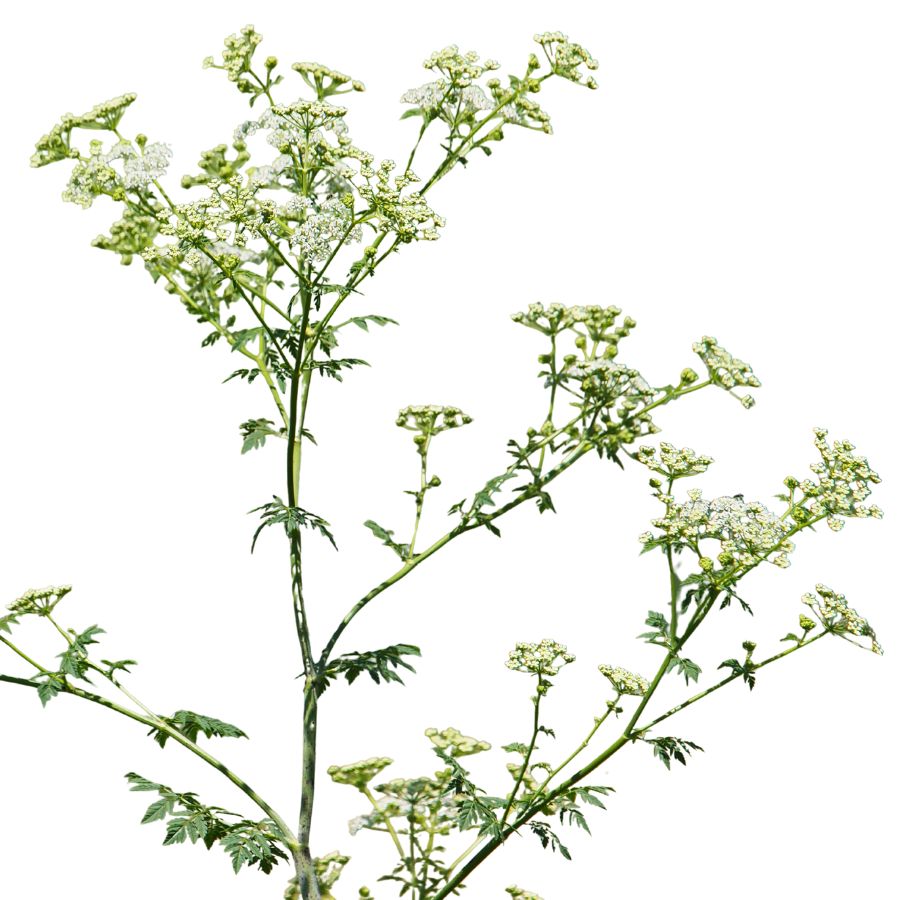
Often mistaken for: Wild carrot (Daucus carota)
Poison hemlock is a tall plant with lacy leaves and umbrella-like clusters of tiny white flowers. It has smooth, hollow stems with purple blotches and grows in sunny places like roadsides, meadows, and stream banks.
Unlike wild carrot, which has hairy stems and a dark central floret, poison hemlock has a musty odor and no flower center spot. It’s extremely toxic; just a small amount can be fatal, and even touching the sap can irritate the skin.
Water Hemlock (Cicuta spp.)
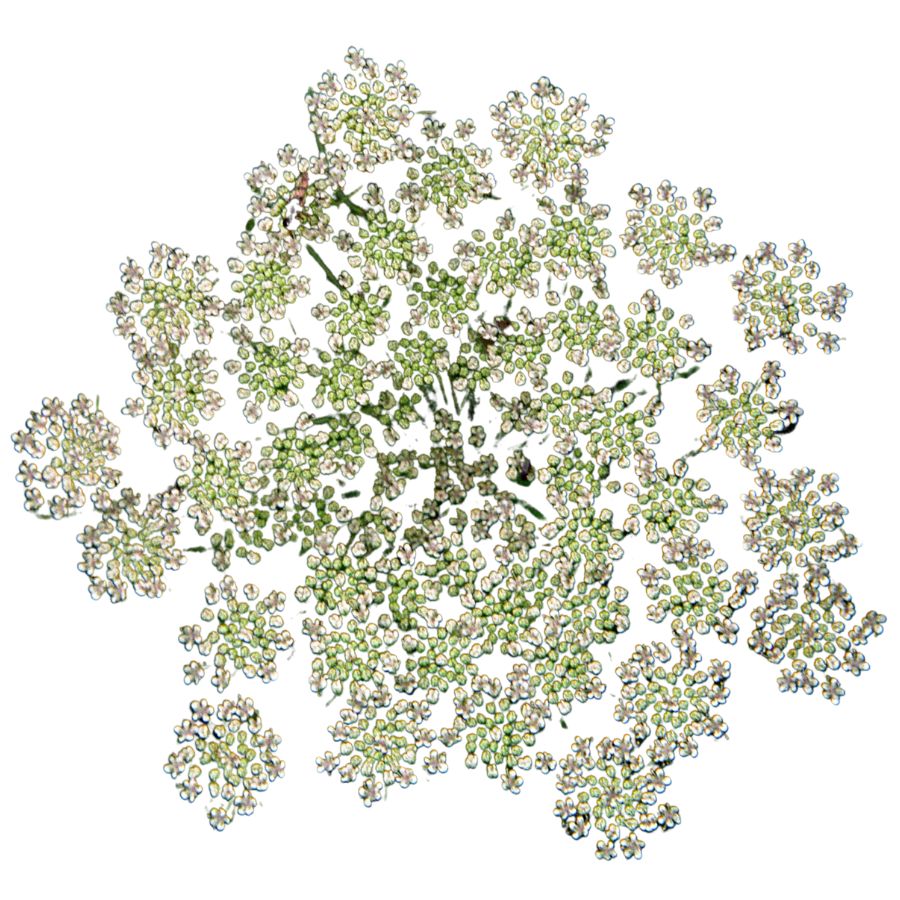
Often mistaken for: Wild parsnip (Pastinaca sativa) or wild celery (Apium spp.)
Water hemlock is a tall, branching plant with umbrella-shaped clusters of small white flowers. It grows in wet places like stream banks, marshes, and ditches, with stems that often show purple streaks or spots.
It can be confused with wild parsnip or wild celery, but its thick, hollow roots have internal chambers and release a yellow, foul-smelling sap when cut. Water hemlock is the most toxic plant in North America, and just a small amount can cause seizures, respiratory failure, and death.
False Hellebore (Veratrum viride)
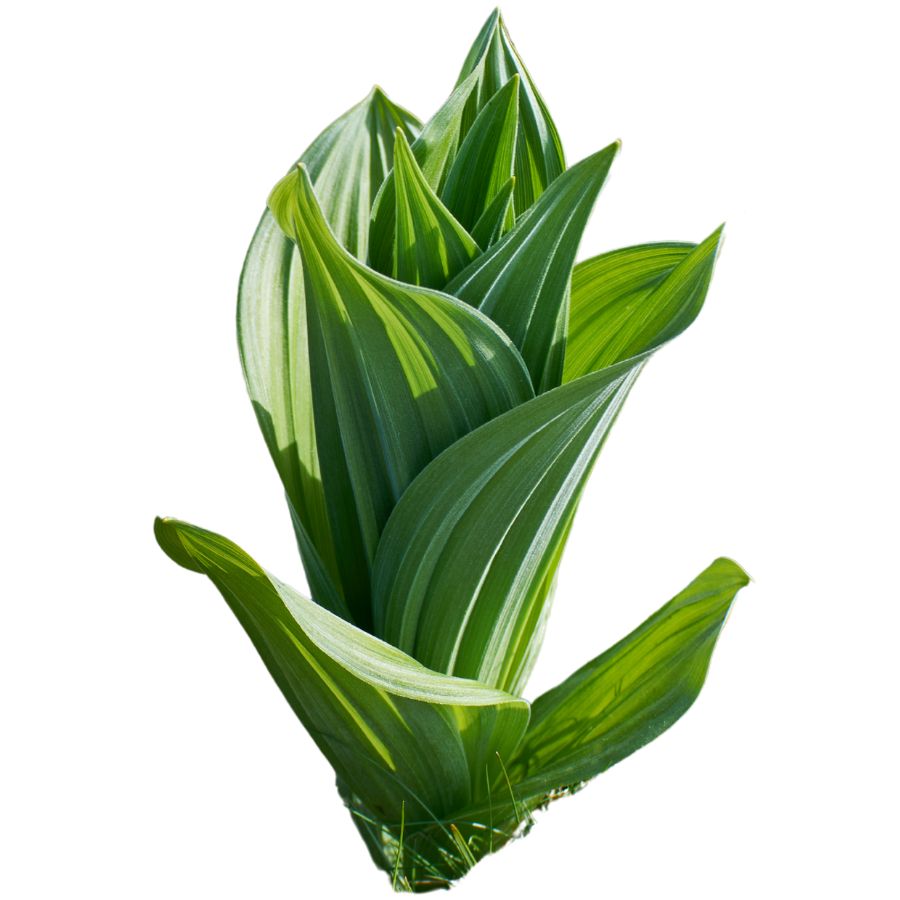
Often mistaken for: Ramps (Allium tricoccum)
False hellebore is a tall plant with broad, pleated green leaves that grow in a spiral from the base, often appearing early in spring. It grows in moist woods, meadows, and along streams.
It’s commonly mistaken for ramps, but ramps have a strong onion or garlic smell, while false hellebore is odorless and later grows a tall flower stalk. The plant is highly toxic, and eating any part can cause nausea, a slowed heart rate, and even death due to its alkaloids that affect the nervous and cardiovascular systems.
Death Camas (Zigadenus spp.)
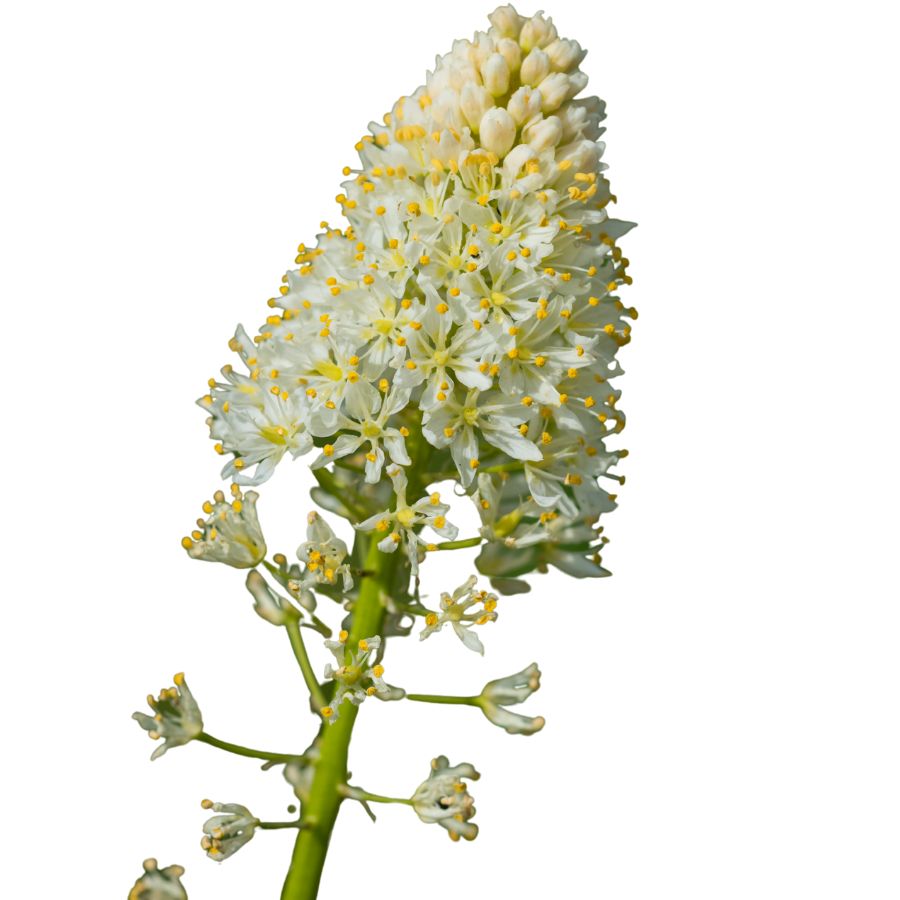
Often mistaken for: Wild onion or wild garlic (Allium spp.)
Death camas is a slender, grass-like plant that grows from underground bulbs and is found in open woods, meadows, and grassy hillsides. It has small, cream-colored flowers in loose clusters atop a tall stalk.
It’s often confused with wild onion or wild garlic due to their similar narrow leaves and habitats, but only Allium plants have a strong onion or garlic scent, while death camas has none. The plant is extremely poisonous, especially the bulbs, and even a small amount can cause nausea, vomiting, a slowed heartbeat, and potentially fatal respiratory failure.
Buckthorn Berries (Rhamnus spp.)
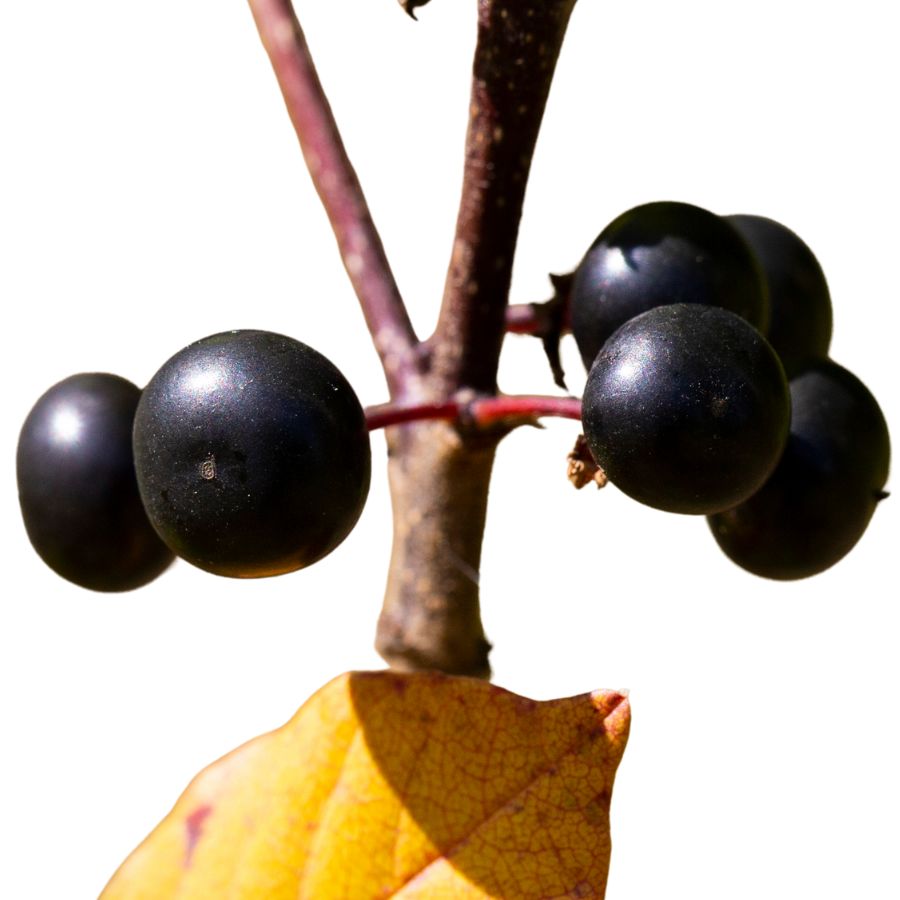
Often mistaken for: Elderberries (Sambucus spp.)
Buckthorn is a shrub or small tree often found along woodland edges, roadsides, and disturbed areas. It produces small, round berries that ripen to dark purple or black and usually grow in loose clusters.
These berries are sometimes mistaken for elderberries and other wild fruits, which also grow in dark clusters, but elderberries form flat-topped clusters on reddish stems while buckthorn berries are more scattered. Buckthorn berries are unsafe to eat as they contain compounds that can cause cramping, vomiting, and diarrhea, and large amounts may lead to dehydration and serious digestive problems.
Mayapple (Podophyllum peltatum)
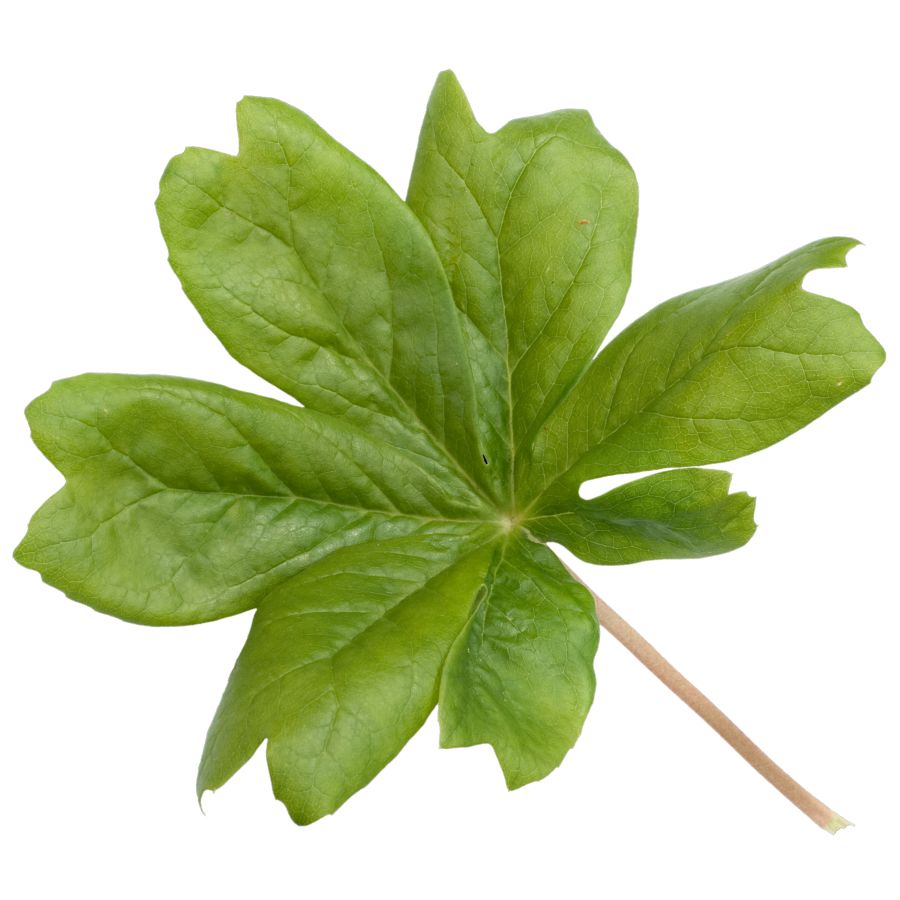
Often mistaken for: Wild grapes (Vitis spp.)
Mayapple is a low-growing plant found in shady forests and woodland clearings. It has large, umbrella-like leaves and produces a single pale fruit hidden beneath the foliage.
The unripe fruit resembles a small green grape, causing confusion with wild grapes, which grow in woody clusters on vines. All parts of the mayapple are toxic except the fully ripe, yellow fruit, which is only safe in small amounts. Eating unripe fruit or other parts can lead to nausea, vomiting, and severe dehydration.
Virginia Creeper (Parthenocissus quinquefolia)
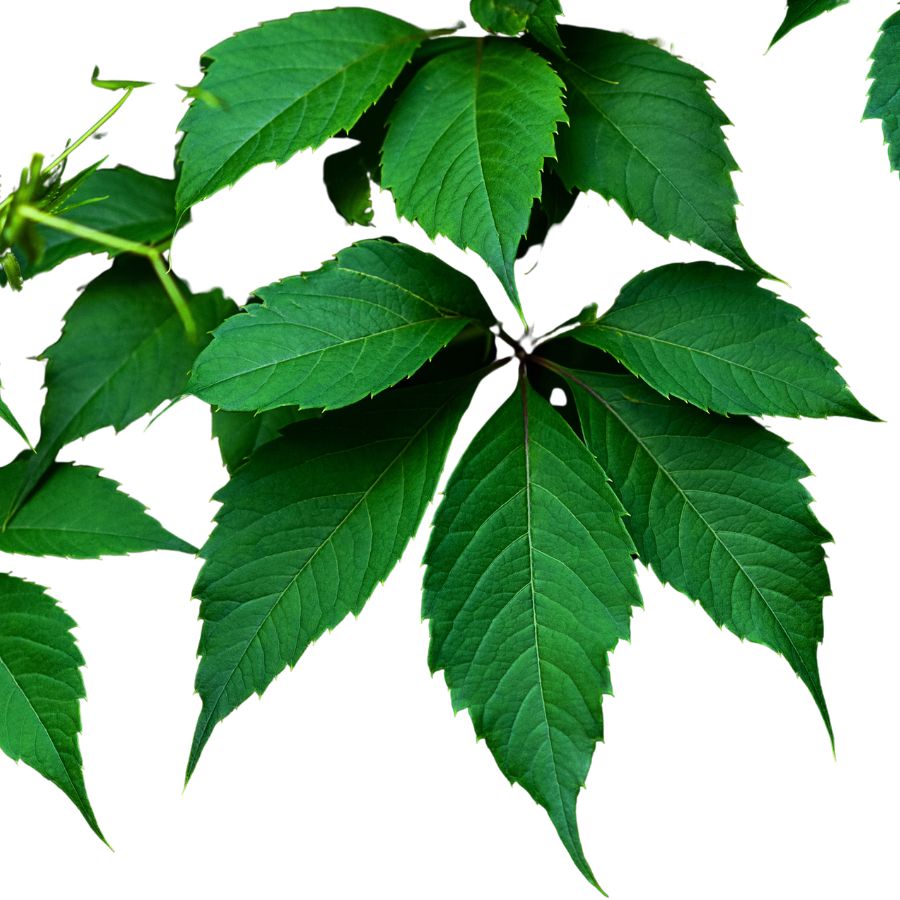
Often mistaken for: Wild grapes (Vitis spp.)
Virginia creeper is a fast-growing vine found on fences, trees, and forest edges. It has five leaflets per stem and produces small, bluish-purple berries from late summer to fall.
It’s often confused with wild grapes since both are climbing vines with similar berries, but grapevines have large, lobed single leaves and tighter fruit clusters. Virginia creeper’s berries are toxic to humans and contain oxalate crystals that can cause nausea, vomiting, and throat irritation.
Castor Bean (Ricinus communis)
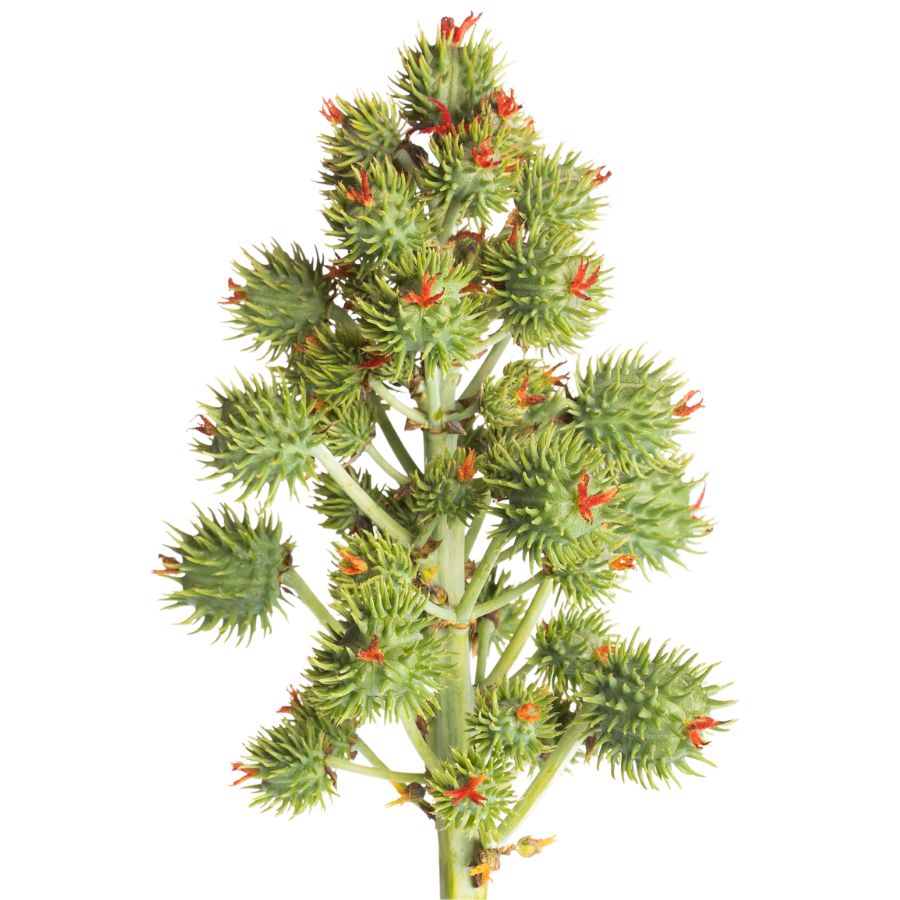
Often mistaken for: Wild rhubarb (Rumex spp. or Rheum spp.)
Castor bean is a bold plant with large, lobed leaves and tall red or green stalks, often found in gardens, along roadsides, and in disturbed areas in warmer regions in the US. Its red-tinged stems and overall size can resemble wild rhubarb to the untrained eye.
Unlike rhubarb, castor bean plants produce spiny seed pods containing glossy, mottled seeds that are extremely toxic. These seeds contain ricin, a deadly compound even in small amounts. While all parts of the plant are toxic, the seeds are especially dangerous and should never be handled or ingested.
A Quick Reminder
Before we get into the specifics about where and how to find these mushrooms, we want to be clear that before ingesting any wild mushroom, it should be identified with 100% certainty as edible by someone qualified and experienced in mushroom identification, such as a professional mycologist or an expert forager. Misidentification of mushrooms can lead to serious illness or death.
All mushrooms have the potential to cause severe adverse reactions in certain individuals, even death. If you are consuming mushrooms, it is crucial to cook them thoroughly and properly and only eat a small portion to test for personal tolerance. Some people may have allergies or sensitivities to specific mushrooms, even if they are considered safe for others.
The information provided in this article is for general informational and educational purposes only. Foraging for wild mushrooms involves inherent risks.
How to Get the Best Results Foraging
Safety should always come first when it comes to foraging. Whether you’re in a rural forest or a suburban greenbelt, knowing how to harvest wild foods properly is a key part of staying safe and respectful in the field.
Always Confirm Plant ID Before You Harvest Anything
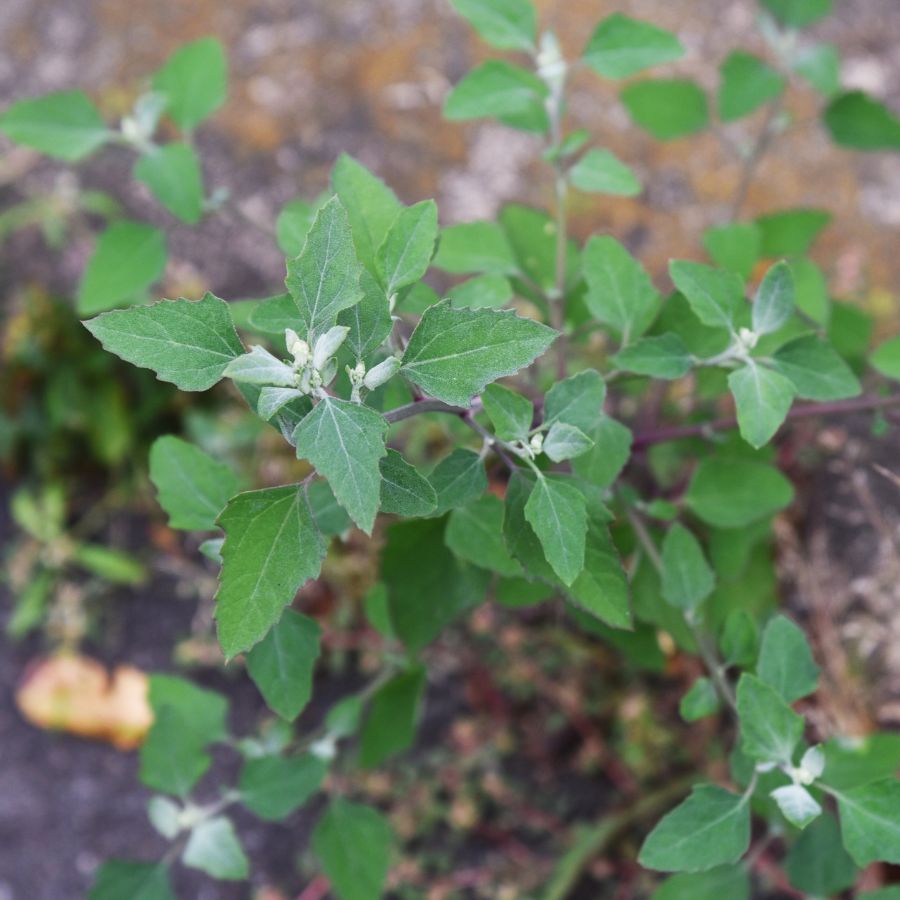
Knowing exactly what you’re picking is the most important part of safe foraging. Some edible plants have nearly identical toxic lookalikes, and a wrong guess can make you seriously sick.
Use more than one reliable source to confirm your ID, like field guides, apps, and trusted websites. Pay close attention to small details. Things like leaf shape, stem texture, and how the flowers or fruits are arranged all matter.
Not All Edible Plants Are Safe to Eat Whole
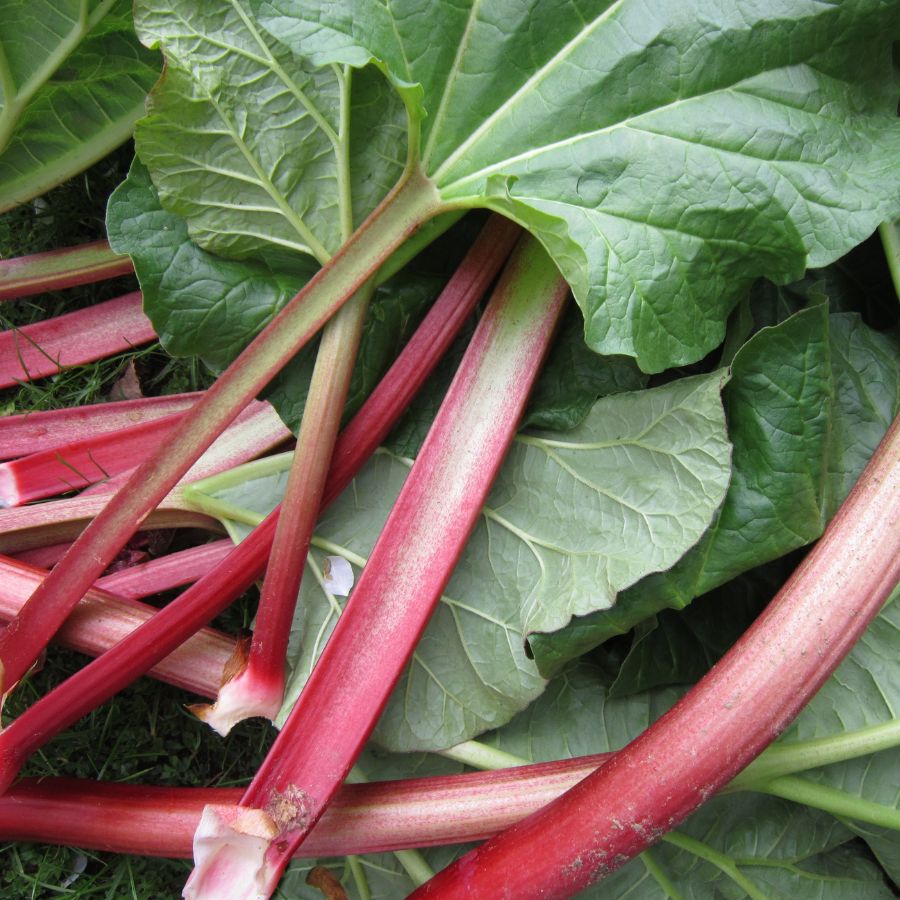
Just because a plant is edible doesn’t mean every part of it is safe. Some plants have leaves, stems, or seeds that can be toxic if eaten raw or prepared the wrong way.
For example, pokeweed is only safe when young and properly cooked, while elderberries need to be heated before eating. Rhubarb stems are fine, but the leaves are poisonous. Always look up which parts are edible and how they should be handled.
Avoid Foraging in Polluted or Contaminated Areas
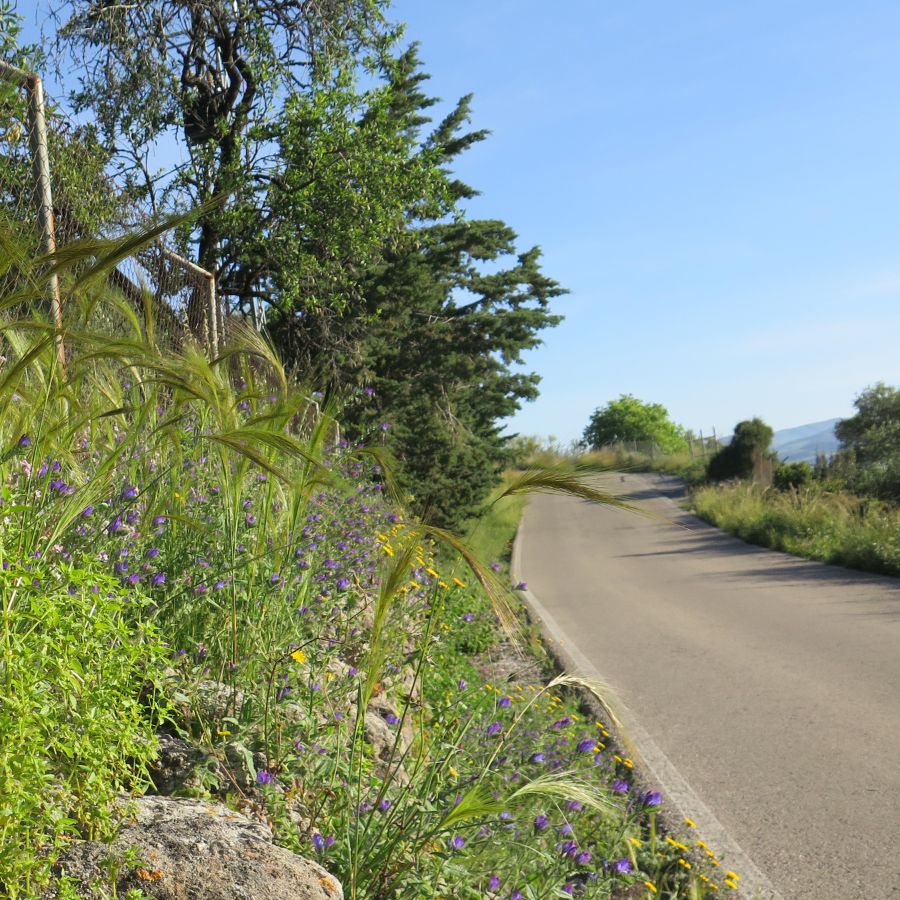
Where you forage matters just as much as what you pick. Plants growing near roads, buildings, or farmland might be coated in chemicals or growing in polluted soil.
Even safe plants can take in harmful substances from the air, water, or ground. Stick to clean, natural areas like forests, local parks that allow foraging, or your own yard when possible.
Don’t Harvest More Than What You Need
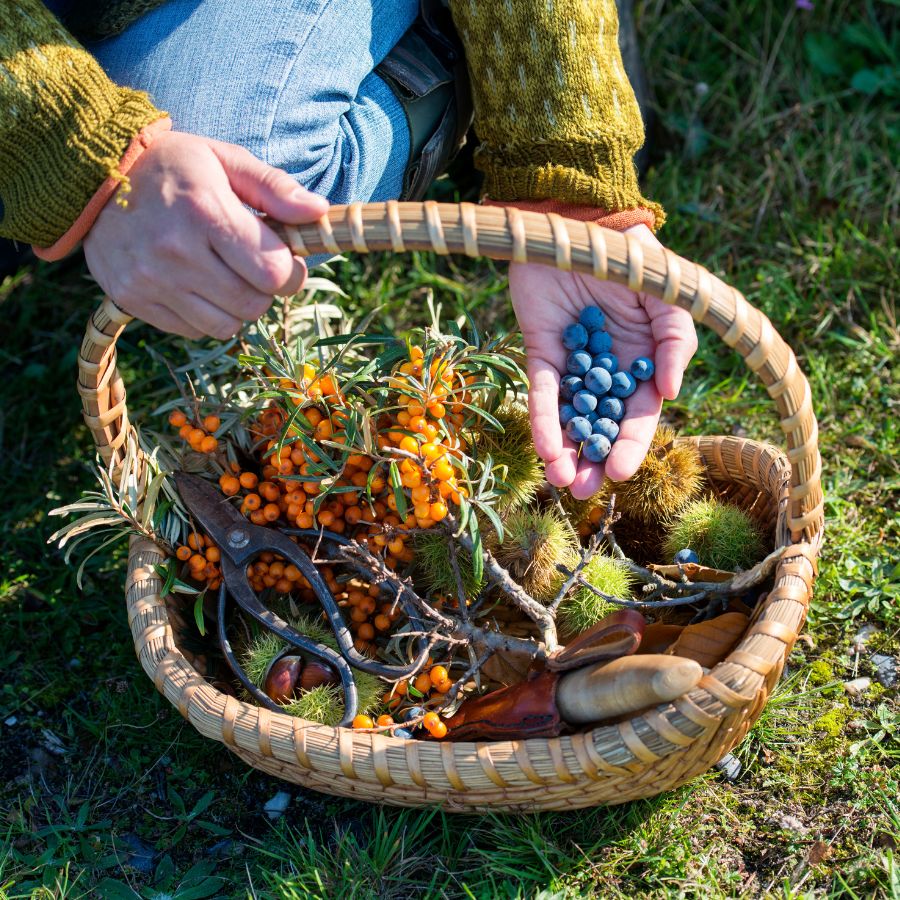
When you forage, take only what you plan to use. Overharvesting can hurt local plant populations and reduce future growth in that area.
Leaving plenty behind helps plants reproduce and supports wildlife that depends on them. It also ensures other foragers have a chance to enjoy the same resources.
Protect Yourself and Your Finds with Proper Foraging Gear

Having the right tools makes foraging easier and safer. Gloves protect your hands from irritants like stinging nettle, and a good knife or scissors lets you harvest cleanly without damaging the plant.
Use a basket or breathable bag to carry what you collect. Plastic bags hold too much moisture and can cause your greens to spoil before you get home.
This forager’s toolkit covers the essentials for any level of experience.
Watch for Allergic Reactions When Trying New Wild Foods

Even if a wild plant is safe to eat, your body might react to it in unexpected ways. It’s best to try a small amount first and wait to see how you feel.
Be extra careful with kids or anyone who has allergies. A plant that’s harmless for one person could cause a reaction in someone else.
Check Local Rules Before Foraging on Any Land
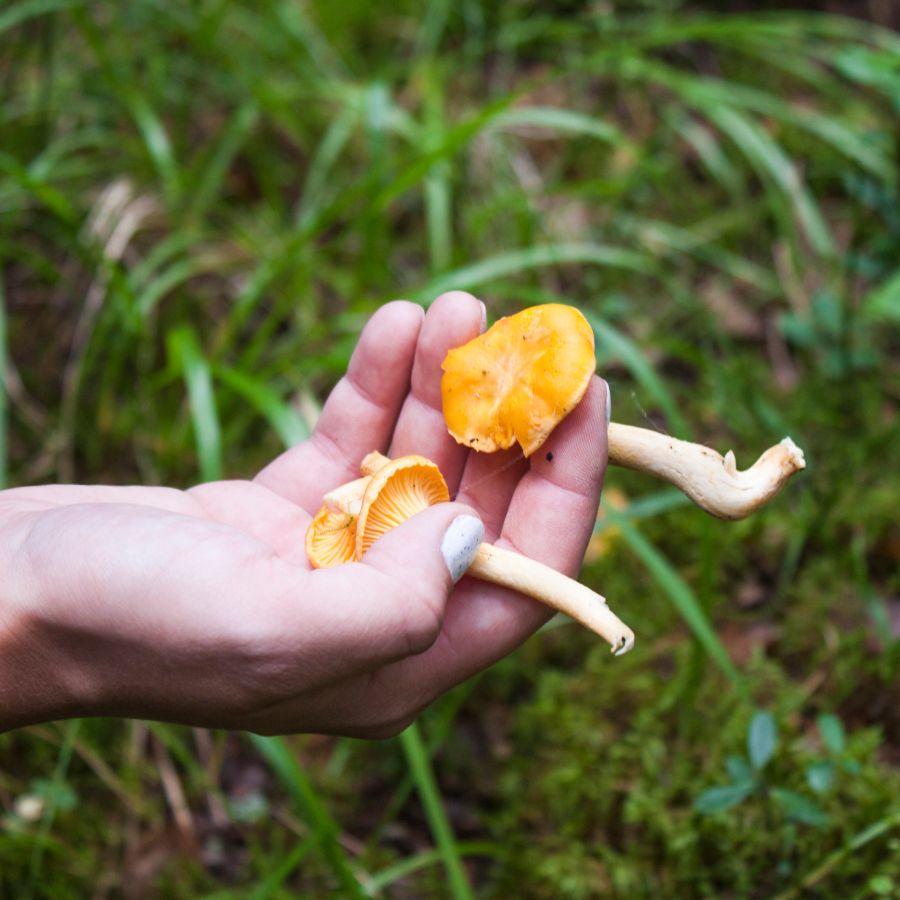
Before you start foraging, make sure you know the rules for the area you’re in. What’s allowed in one spot might be completely off-limits just a few miles away.
Some public lands permit limited foraging, while others, like national parks, usually don’t allow it at all. If you’re on private property, always get permission first.
Before you head out
Before embarking on any foraging activities, it is essential to understand and follow local laws and guidelines. Always confirm that you have permission to access any land and obtain permission from landowners if you are foraging on private property. Trespassing or foraging without permission is illegal and disrespectful.
For public lands, familiarize yourself with the foraging regulations, as some areas may restrict or prohibit the collection of mushrooms or other wild foods. These regulations and laws are frequently changing so always verify them before heading out to hunt. What we have listed below may be out of date and inaccurate as a result.
Where to Find Forageables in the State
There is a range of foraging spots where edible plants grow naturally and often in abundance:
| Plant | Locations |
|---|---|
| Dandelion (Taraxacum officinale) | – Will Rogers Park in Claremore – Sooner Park in Bartlesville – Sallisaw Creek Park |
| Blackberry (Rubus allegheniensis) | – Red Slough Wildlife Management Area – Sequoyah National Wildlife Refuge – Greenleaf State Park |
| Wild onion (Allium canadense) | – Osage Hills State Park – Fort Gibson Lake Wildlife Management Area – Chickasaw National Recreation Area |
| Pecan (Carya illinoinensis) | – Lake Eufaula State Park – Tishomingo National Wildlife Refuge – McGee Creek State Park |
| Wild garlic (Allium vineale) | – Lake Thunderbird State Park – McCurtain County Wilderness Area – Ray Harral Nature Park |
| Mulberry (Morus rubra) | – Greenleaf State Park – Boiling Springs State Park – Bernice Nature Center at Grand Lake |
| Wild grape (Vitis riparia) | – Lake Tenkiller State Park – Spavinaw Area at Grand Lake State Park – Brushy Lake Recreation Area |
| Redbud flowers (Cercis canadensis) | – Sequoyah State Park – Boomer Lake Park in Stillwater – Warrior Stadium Trail in Anadarko |
| Eastern persimmon (Diospyros virginiana) | – Okmulgee Lake Recreation Area – Seminole City Park – Madill City Lake Park |
| Wild sunflower (Helianthus annuus) | – Salt Plains National Wildlife Refuge – Lake Ellsworth area – Foss State Park |
| American beautyberry (Callicarpa americana) | – McCurtain County Wilderness Area – Talimena State Park – Hickory Point Recreation Area |
| Beebalm / Wild bergamot (Monarda fistulosa) | – Wichita Mountains Wildlife Refuge – Tallgrass Prairie Preserve – Red Slough Wildlife Management Area |
| Black walnut (Juglans nigra) | – Greenleaf State Park – Roman Nose State Park – Lake Wister State Park |
| Cattail (Typha spp.) | – Oxley Nature Center – Arcadia Lake area – Lake Hefner Wetlands |
| Chickweed (Stellaria media) | – Government Springs Park in Enid – Highland Park in Guthrie – Nobles Park in Altus |
| Carolina buckthorn (Frangula caroliniana) | – Sequoyah Bay State Park – Three Rivers Wildlife Management Area – Blue Lake Public Hunting Area |
| Dewberry (Rubus flagellaris) | – Deep Fork National Wildlife Refuge – Blue River Public Hunting Area – Tishomingo National Wildlife Refuge |
| Dock (Rumex crispus) | – Martin Park Nature Center – Bixhoma Lake Trail – Arcadia Conservation Education Area |
| Elderberry (Sambucus canadensis) | – Little River National Wildlife Refuge – Lake Texoma State Park – Hugo Lake State Park |
| Greenbrier (Smilax spp.) | – Robbers Cave State Park – Lake Carl Blackwell – Chickasaw National Recreation Area |
| Ground cherry (Physalis spp.) | – Lake McMurtry area – Chickasaw National Recreation Area – Lake Vincent Recreation Area |
| Horsemint (Monarda punctata) | – Gloss Mountain State Park – Cooper Wildlife Management Area – Lake Texoma State Park |
| Jerusalem artichoke (Helianthus tuberosus) | – Salt Plains National Wildlife Refuge – Lake Murray State Park – Sequoyah Bay State Park |
| Lamb’s quarters (Chenopodium album) | – Oxley Nature Center in Tulsa – Honor Heights Park in Muskogee – Ackley Park in Elk City |
| Mayapple (Podophyllum peltatum) | – Tahlequah City Park – Blue River Public Hunting Area – Keystone Lake State Park |
| Pawpaw (Asimina triloba) | – McCurtain County Wilderness Area – Spavinaw Wildlife Management Area – Lake Yahola Wetlands |
| Plantain (Plantago major) | – Lake Murray State Park – Kelly Lane Park in Sapulpa – Little River Park in Idabel |
| Prickly pear cactus (Opuntia spp.) | – Alabaster Caverns State Park – Gloss Mountain State Park – Black Mesa State Park |
| Purslane (Portulaca oleracea) | – Martin Nature Park in Oklahoma City – Central Park in Ardmore – Boy Scout Park in Shawnee |
| Sassafras (Sassafras albidum) | – Talimena Scenic Drive – Spavinaw Hills State Game Refuge – Honobia Creek Wildlife Management Area |
| Shepherd’s purse (Capsella bursa-pastoris) | – Will Rogers Gardens – Tulsa Botanic Garden – Lake Claremore Recreation Area |
| Sand plum (Prunus angustifolia) | – Great Salt Plains State Park – Quartz Mountain State Park – Arrowhead State Park |
| Sow thistle (Sonchus oleraceus) | – Ray Harral Nature Park – Hackberry Flat Wildlife Management Area – Lexington Wildlife Management Area |
| Stinging nettle (Urtica dioica) | – Beavers Bend State Park – Lake Thunderbird State Park – Lake Eufaula State Park |
| Sumac (Rhus glabra) | – Lake Overholser Park – Chandler Park in Tulsa – Black Kettle National Grassland |
| Violet (Viola spp.) | – Woodward Park in Tulsa – Lake Atoka Reservoir – Roman Nose State Park |
| Watercress (Nasturtium officinale) | – Travertine Creek in Sulphur – Blue River in Tishomingo – Natural Springs in Bromide |
| White clover (Trifolium repens) | – Lake Thunderbird State Park – Oologah Lake area – Okmulgee Recreation Area |
| Wild lettuce (Lactuca canadensis) | – Lake Stanley Draper Trails – Redbud Valley Nature Preserve – Great Plains Trail near Lawton |
| Wild mint (Mentha arvensis) | – Lower Mountain Fork River – Fort Gibson Wildlife Management Area – Tenkiller Ferry Lake Shoreline |
| Wild plum (Prunus americana) | – Red Rock Canyon Adventure Park – Beavers Bend State Park – Raymond Gary State Park |
| Wild rose (Rosa spp.) | – Roman Nose State Park – Fort Cobb State Park – Greenleaf State Park |
| Wood sorrel (Oxalis spp.) | – Lake Thunderbird State Park – Elmer Thomas Park in Lawton – Lake Durant Park |
Peak Foraging Seasons
Different edible plants grow at different times of year, depending on the season and weather. Timing your search makes all the difference.
Spring
Spring brings a fresh wave of wild edible plants as the ground thaws and new growth begins:
| Plant | Months | Best Weather Conditions |
|---|---|---|
| Chickweed (Stellaria media) | March–May | cool, moist ground |
| Dandelion (Taraxacum officinale) | March–May | lawns, sunny after rain |
| Lamb’s quarters (Chenopodium album) | April–May | sunny disturbed soil |
| Mayapple (Podophyllum peltatum) | April–May | shaded, damp forest |
| Plantain (Plantago major, Plantago rugelii) | April–May | moist, compacted soil |
| Redbud flowers (Cercis canadensis) | March–April | sunny woodland edges |
| Violet (Viola spp.) | March–May | cool, shaded woods |
| Wild garlic (Allium vineale) | March–May | open fields after rain |
| Wild onion (Allium canadense) | March–May | moist meadows, sunny after rain |
| Wood sorrel (Oxalis spp.) | March–May | cool, shaded forest floor |
Summer
Summer is a peak season for foraging, with fruits, flowers, and greens growing in full force:
| Plant | Months | Best Weather Conditions |
|---|---|---|
| American beautyberry (Callicarpa americana) | July–August | open woods, after rain |
| Cattail (Typha spp.) | June–August | wetlands, sunny days |
| Greenbrier shoots (Smilax spp.) | May–July | part shade, forest edges |
| Mulberry (Morus rubra) | June–July | sunny woodland edges |
| Prickly pear cactus (Opuntia spp.) | June–August | dry, open sunny areas |
| Purslane (Portulaca oleracea) | June–August | sunny, disturbed soils |
| Wild bergamot (Monarda fistulosa) | June–August | dry sunny fields |
| Wild grape (Vitis riparia, Vitis vulpina) | July–August | edges of woods, vines in sun |
| Wild mint (Mentha arvensis) | June–August | moist soils near water |
| Wild rose (Rosa spp.) | May–July | open areas after rain |
Fall
As temperatures drop, many edible plants shift underground or produce their last harvests:
| Plant | Months | Best Weather Conditions |
|---|---|---|
| Black walnut (Juglans nigra) | September–October | beneath trees in sun |
| Eastern persimmon (Diospyros virginiana) | September–November | woodlands after first frost |
| Elderberry (Sambucus canadensis) | August–September | sunny roadside edges |
| Ground cherry (Physalis spp.) | August–October | sunny fields, disturbed ground |
| Horsemint (Monarda punctata) | August–October | dry prairies, sunny spots |
| Pecan (Carya illinoinensis) | September–November | dry leaf litter under trees |
| Pawpaw (Asimina triloba) | September–October | moist woods near streams |
| Sand plum (Prunus angustifolia) | August–September | dry, open prairies |
| Sumac (Rhus glabra, Rhus copallina) | September–October | dry open areas |
| Wild plum (Prunus americana) | August–September | open thickets, sunny edges |
Winter
Winter foraging is limited but still possible, with hardy plants and preserved growth holding on through the cold:
| Plant | Months | Best Weather Conditions |
|---|---|---|
| Carolina buckthorn (Frangula caroliniana) | November–January | shaded woodland understory |
| Dock (Rumex crispus, Rumex obtusifolius) | December–February | disturbed moist soil |
| Jerusalem artichoke (Helianthus tuberosus) | November–February | dig after frost in sunny spots |
| Sassafras (Sassafras albidum) | November–February | leaf litter near trees |
| Shepherd’s purse (Capsella bursa-pastoris) | December–February | sunny disturbed areas |
| Sow thistle (Sonchus oleraceus) | December–February | open fields, moist soil |
| Stinging nettle (Urtica dioica) | December–February | moist shaded areas |
| Watercress (Nasturtium officinale) | December–February | clean, shallow streams |
| White clover (Trifolium repens) | December–February | lawns and meadows, sunny |
| Wild lettuce (Lactuca canadensis) | December–February | cool, shaded forest edges |
One Final Disclaimer
The information provided in this article is for general informational and educational purposes only. Foraging for wild plants and mushrooms involves inherent risks. Some wild plants and mushrooms are toxic and can be easily mistaken for edible varieties.
Before ingesting anything, it should be identified with 100% certainty as edible by someone qualified and experienced in mushroom and plant identification, such as a professional mycologist or an expert forager. Misidentification can lead to serious illness or death.
All mushrooms and plants have the potential to cause severe adverse reactions in certain individuals, even death. If you are consuming foraged items, it is crucial to cook them thoroughly and properly and only eat a small portion to test for personal tolerance. Some people may have allergies or sensitivities to specific mushrooms and plants, even if they are considered safe for others.
Foraged items should always be fully cooked with proper instructions to ensure they are safe to eat. Many wild mushrooms and plants contain toxins and compounds that can be harmful if ingested.

